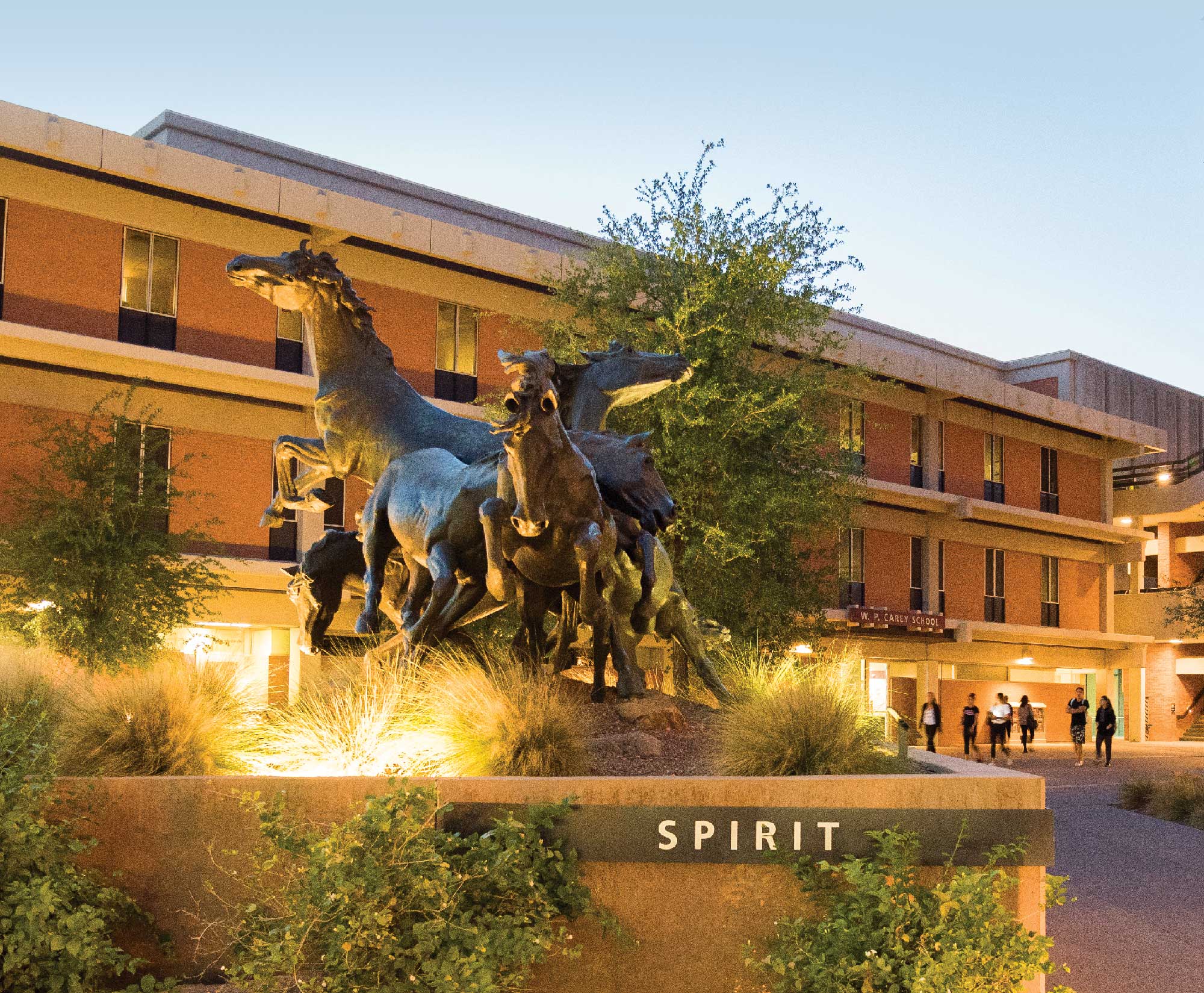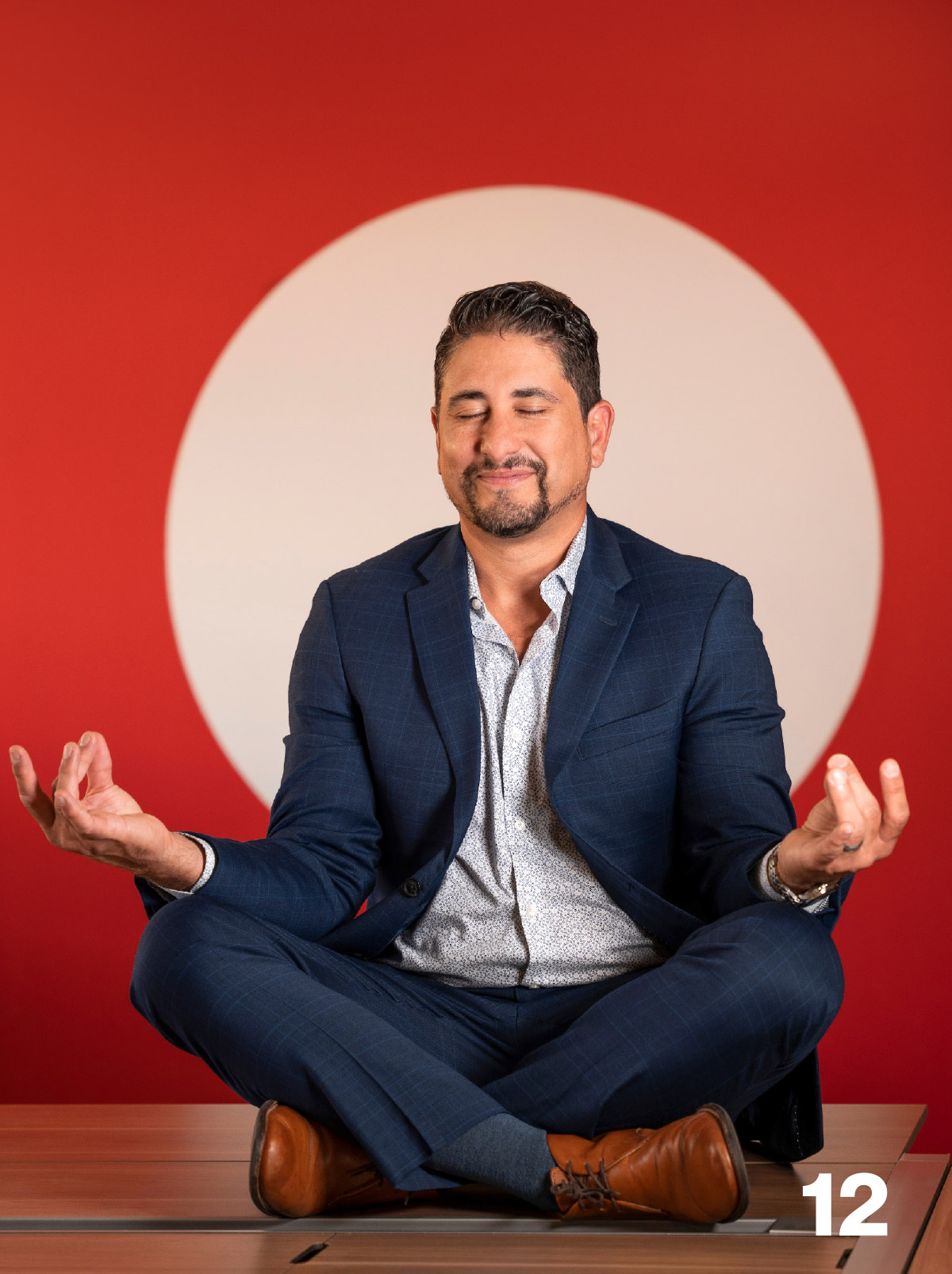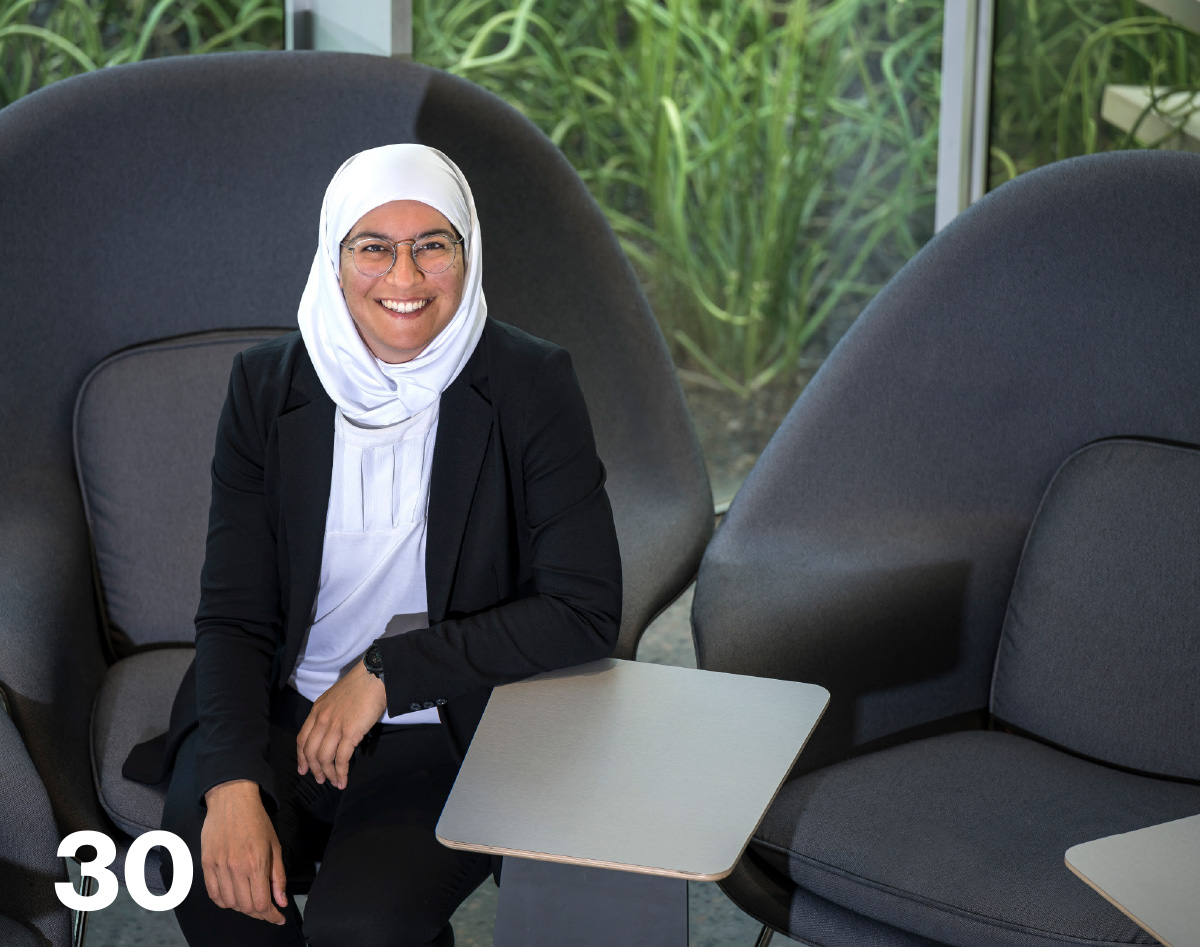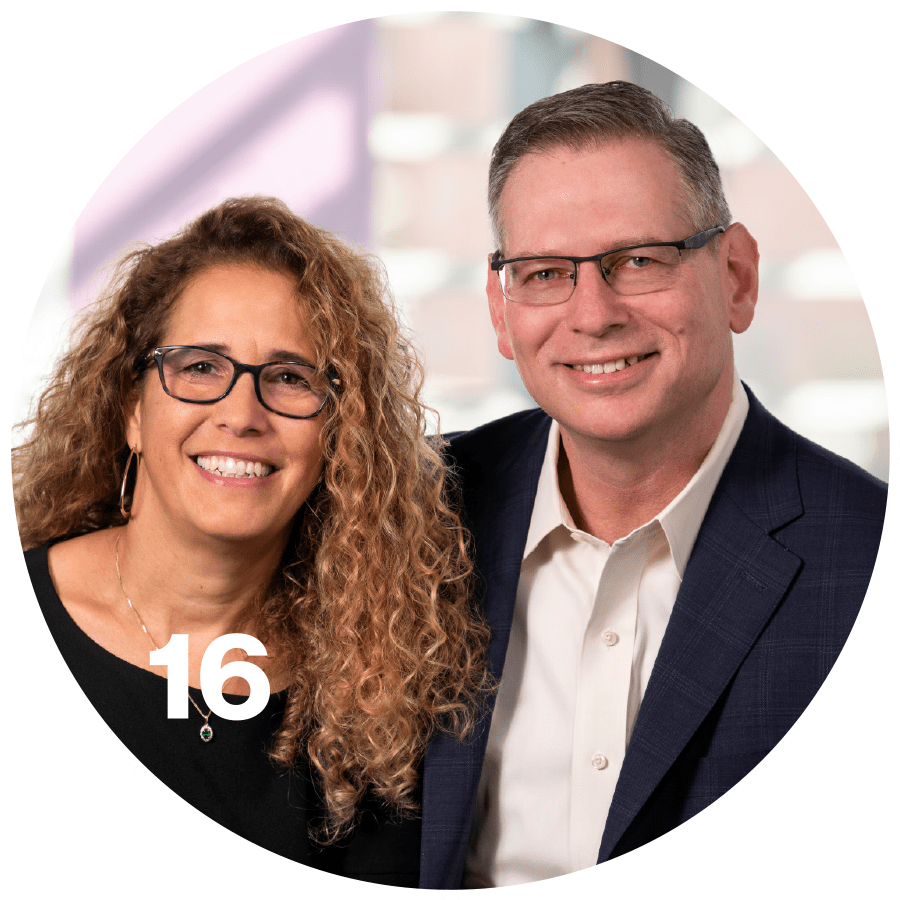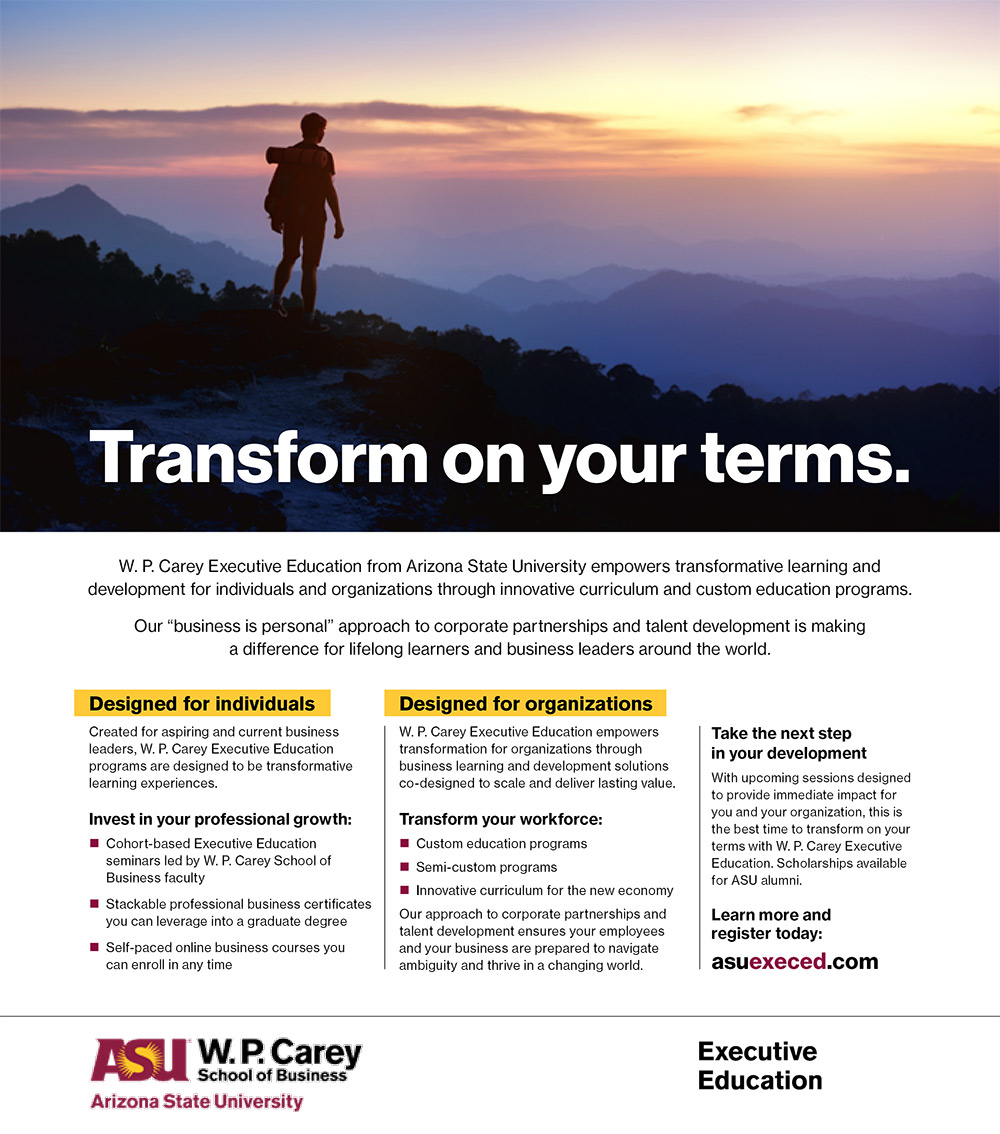
W.P. Carey Spring 2022
to him than finance
“Our plan aims to propel W. P. Carey to new heights in business education, knowledge creation, and engagement with businesses and communities”
“Our plan aims to propel W. P. Carey to new heights in business education, knowledge creation, and engagement with businesses and communities.”
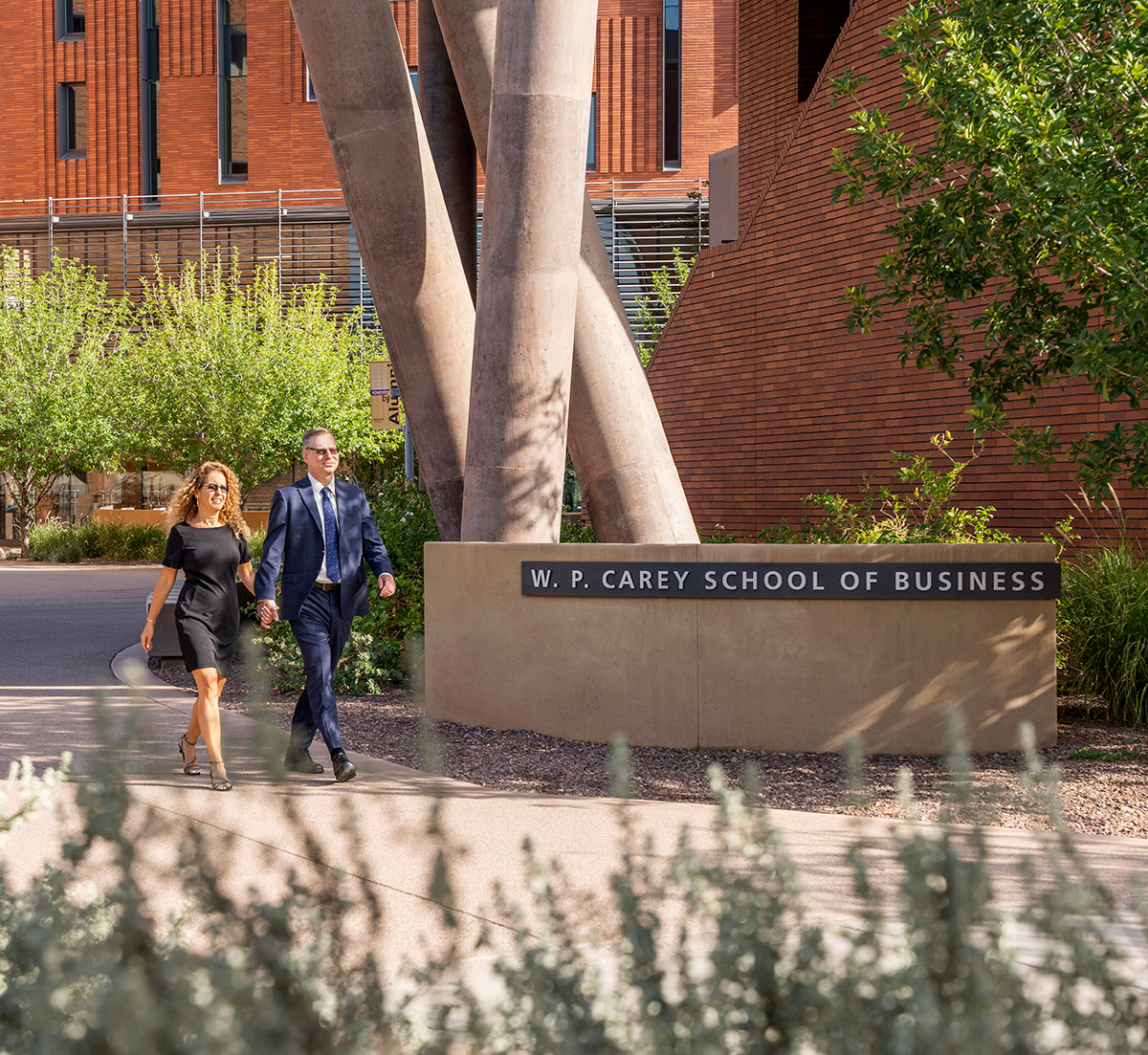
Dean’s Letter WPC
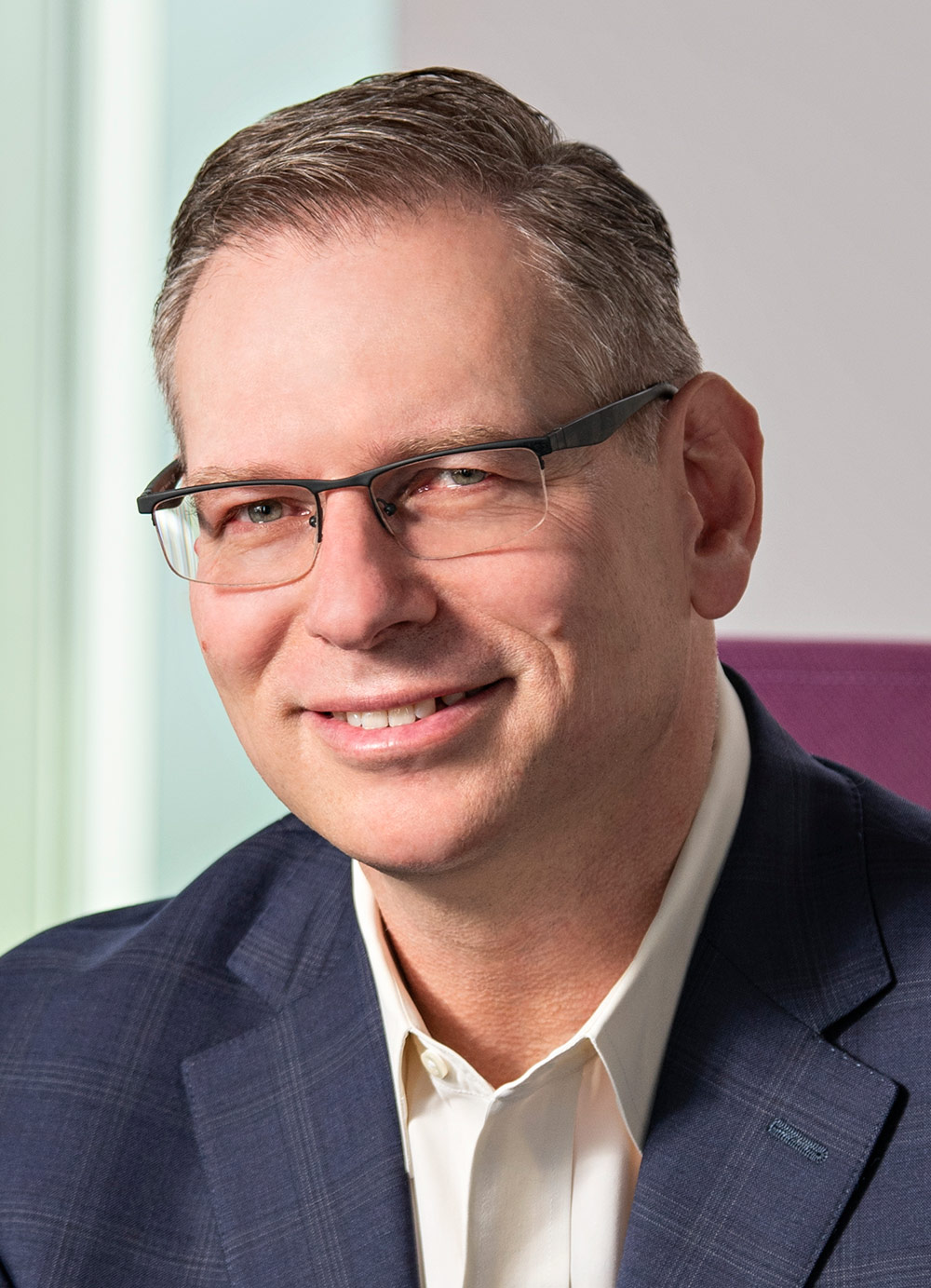
To the W. P. Carey community,
y first decision as an incoming dean was to launch a comprehensive strategic planning process for W. P. Carey.
This process engages faculty, staff, students, alumni, employers, and business leaders. In this issue of W. P. Carey magazine, we share the first details of the strategic plan (p. 24). Through the strategic planning process, we reimagined the future of business education to prioritize access, excellence, and innovation in everything we do. Our plan aims to propel W. P. Carey to new heights in business education, knowledge creation, and engagement with businesses and communities. Our five-year strategic plan is ambitious and demands resources, but we are confident in our community’s ability to realize it.
We would love to hear your thoughts, too. If you’d like to share feedback on the W. P. Carey strategic plan or ideas for its advancement, please visit wpcarey.asu.edu/strategic-planning. In addition to a lot of helpful information, there is also a form where you can leave detailed feedback for the school’s leadership. As alumni and friends of the school, you are a vital part of our planning process. I appreciate your thoughtful engagement and time.
I would also like to invite you back to campus for ASU’s Homecoming celebrations. We kick off the weekend with our W. P. Carey Alumni Hall of Fame induction ceremony. It will take place on the evening of Thursday, Nov. 17, on our Tempe campus, in addition to our homecoming tailgate celebrations before the big game on Saturday, Nov. 19. It would be great to meet you!
If you can’t make it for Homecoming, perhaps we can meet at an alumni event across the country or online. Visit wpcarey.asu.edu/alumni for a complete list of upcoming events. Also, if you want to learn more about me and my vision for business education, go to p. 16.
I look forward to building on W. P. Carey’s foundation as one of the best business schools in the country. Together, we will continue to transform business education. Thank you for your support!

@WPCdean
Ohad Kadan, Dean
W. P. Carey Distinguished Chair in Business
Charles J. Robel Dean’s Chair
W. P. Carey School of Business
Arizona State University
W. P. Carey Indigenous Land Acknowledgement
WPC Voices
Overheard on social media
Editor’s note: Posts have been edited for length and clarity.
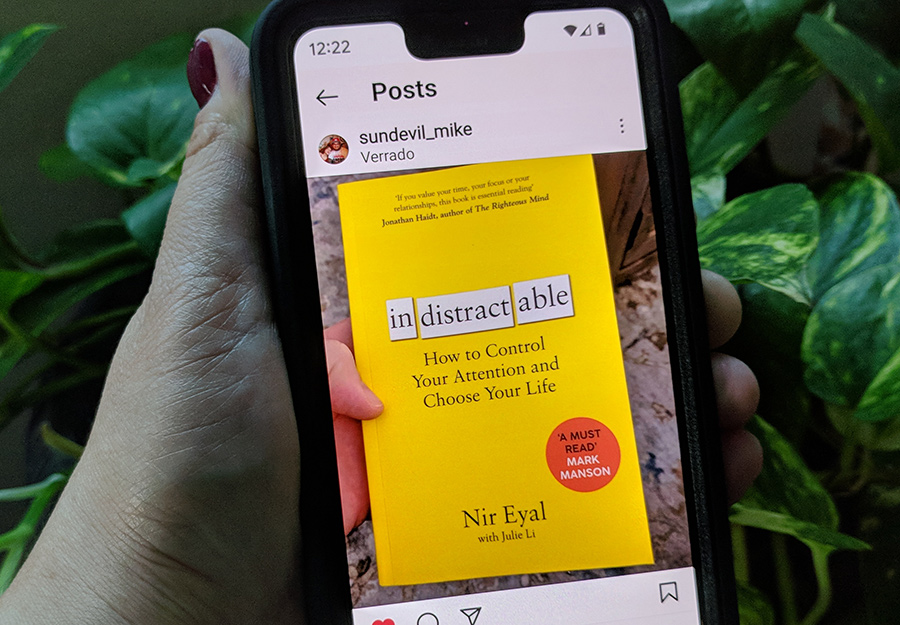
 Michael Brockman (MBA ’21)
Michael Brockman (MBA ’21)
 I enjoyed this one quite a bit, definitely some takeaways that I’ll be incorporating in my daily life!
I enjoyed this one quite a bit, definitely some takeaways that I’ll be incorporating in my daily life!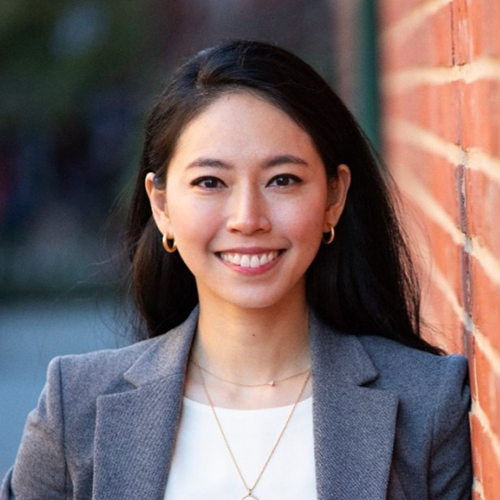
 Ariel Kuo (MACC ’20)
Ariel Kuo (MACC ’20)
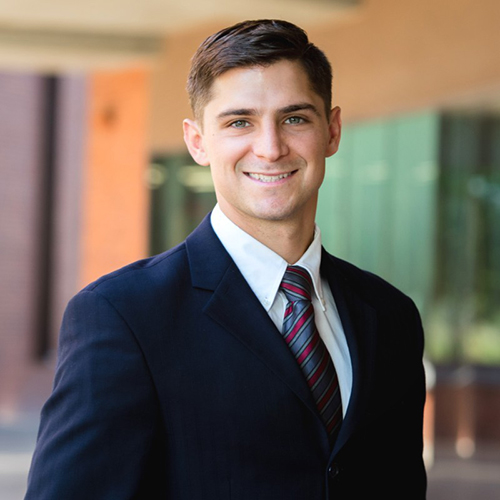
 Rob Maloney (MBA ’22)
Rob Maloney (MBA ’22)
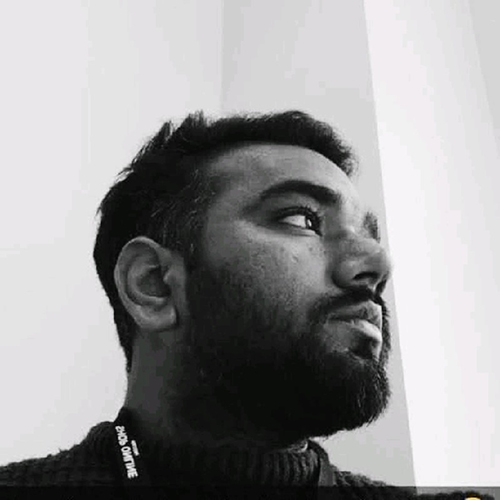
 Gaurav Mishra (MS-ISM ’22)
Gaurav Mishra (MS-ISM ’22)I don’t know what the future holds, and I don’t know what my career will look like in a few years, but before leaving home, I promised my dad that I would make him proud, and I will make sure to keep my promise every single day!
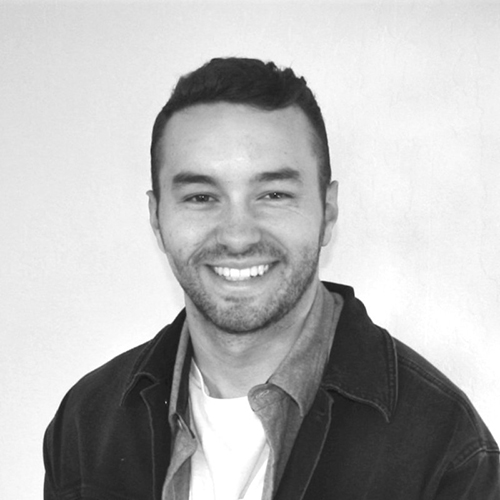
 Will Simmons (BS Marketing ’22)
Will Simmons (BS Marketing ’22)
For me, success is having creative freedom because it implies respect and trust from your team to deliver. I built up the confidence to execute when given those significant opportunities because of repetition and faking it ’til I made it repeatedly. It was all about baby steps for me and finding people/communities to support me through each step.
Inside WPC
Upfront
Features
Departments

Volume 10, Issue 1, Autumn 2022
Ohad Kadan
Dean, W. P. Carey Distinguished
Chair in Business, Charles J. Robel
Dean’s Chair
Colin Boyd
Executive Director, Marketing
and Communications
Theresa Shaw
Manager of Alumni Relations
W. P. Carey Alumni
wpcarey.asu.edu/alumni
Facebook
facebook.com/wpcareyschool
LinkedIn
wpcarey.asu.edu/linkedin
Twitter
@WPCareySchool
Shay Moser
Senior Creative Director
Paula Murray
Staff Contributors
Emily Beach, Perri Collins, Langston Fields, Hannah O’Regan, Madeline Sargent, Hunter McCormick, Tiana Morgan
Contributors
Joe Bardin, Marshall Terrill, Melissa Crytzer Fry, Betsy Loeff
Photographers
W. Scott Mitchell, Shelley Valdez
Managing Editor
W. P. Carey School of Business
Arizona State University
PO Box 872506
Tempe, AZ 85287-2506
Changes of address and other subscription inquiries can be emailed to:
editor.wpcmagazine@asu.edu
W. P. Carey magazine is a publication of the W. P. Carey School of Business at Arizona State University © 2022
Send editorial submissions and letters to:
editor.wpcmagazine@asu.edu
Young and Empowered Women (Y&E)
Learning Opportunities
Sun Devil Stories
When Veronica Aguilar (BA Business Communication ’12, MBA ’21) started her nonprofit, Young & Empowered Women (Y&E), she knew the organization was special. “I identified a need for women to come together and empower each other during difficult circumstances,” she says. “I also want to close the gender gap and ensure that all women have equal opportunities in the workforce.”
The W. P. Carey School of Business helped Aguilar turn her dream into reality. “I was taking a business planning course during my second year of the MBA program,” she says.
“I created the board of directors and bylaws, and because of the support, I felt confident moving forward with starting my own nonprofit,” she says. “Faculty and staff were rooting for me and in my corner.”
Y&E achieved official nonprofit status in June 2021, and Aguilar is excited about the future. “It’s important to have a diverse ecosystem of women supporting you in your journey,” she says. “The majority of our members identify as women of color and first-generation college students who seek guidance and mentorship on their personal and professional growth.”
Join Us For Future Events
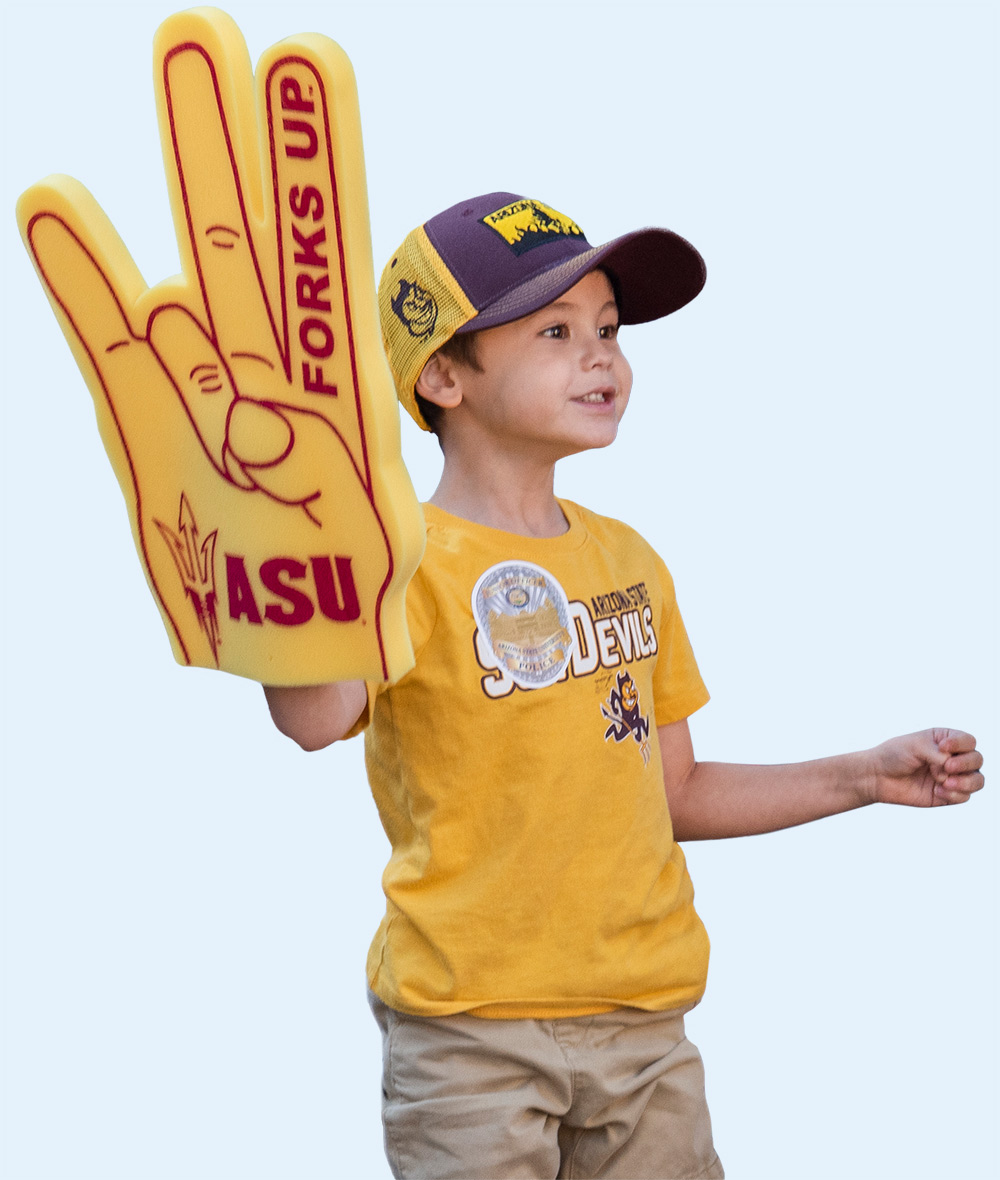

Join us! You’ll be glad you did.


The Color of Money
e often describe money in terms of its green color: Early U.S. dollars were sometimes called greenbacks, and people sometimes refer to needing “more green” to make a purchase. Yet the amount of “green” you have access to can be affected by other factors, like the color of your skin or gender. Seth Pruitt, associate professor of finance, launched a course last spring to explore “Systemic Discrimination and Financial Outcomes.”
The goal of the class is to cover the financial and economic effects of gender- and race-based discrimination and employ statistical and economic concepts to facilitate evidence-based discussions. “Part of being fully prepared for today’s workforce is the ability to have important conversations about topics like discrimination in business,” explains Pruitt. “I hope students leave my course with a better understanding of finance topics, but also a better understanding of how those concepts affect peoples’ lives — sometimes in disparate ways.”
As the W. P. Carey School activates its strategic plan (see p. 24), topics surrounding diversity, equity, and inclusion will continue to increase in courses, directly tied to the school’s focus on access, excellence, and innovation in business education.
ALL THINGS WPC
PROGRAM SNAPSHOT:
Real estate at W. P. Carey
Program snapshot:
“Teaching students to be socially and environmentally responsible community builders while they learn how to make a profit and grow a community is more important than ever,” says Mark Stapp, Fred E. Taylor Professor of Real Estate. “Real estate knowledge can help solve critical affordability issues, ensure continued quality growth, and avoid another Great Recession.”
The Division of Real Estate at W. P. Carey addresses the complexity of the field and its far-reaching effects on our communities and economy.
The nine-month W. P. Carey Master of Real Estate Development (MRED) program offers an innovative, transdisciplinary, collaborative approach involving four ASU schools: the Sandra Day O’Connor College of Law, the Herberger Institute for Design and the Arts, W. P. Carey, and the Del E. Webb School of Construction. Students work closely in class and on required projects. They have access to leading professional organizations and their members. They can consult with the W. P. Carey Real Estate Advisory Board and join a robust alumni network of MRED graduates working in and leading the global real estate development industry.
ALL THINGS WPC
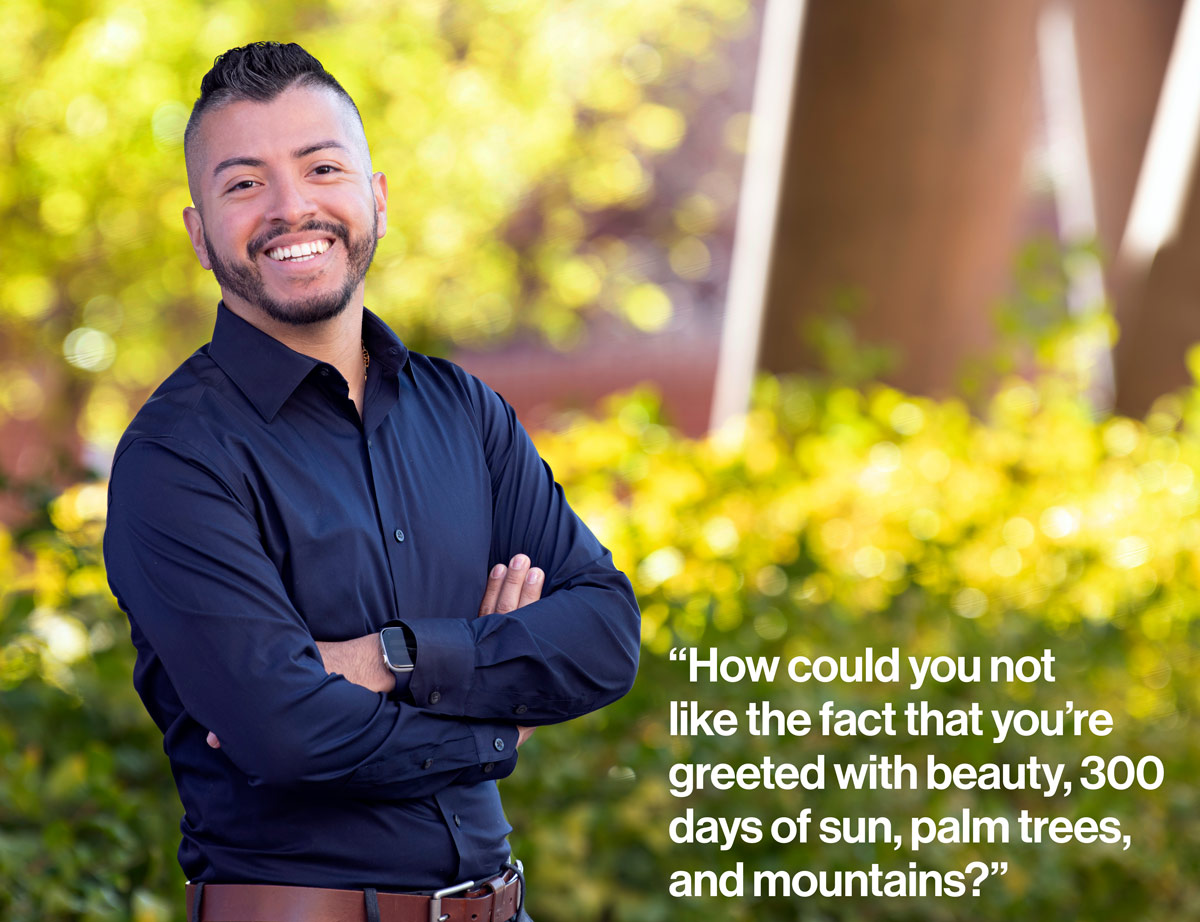
A magical place to live and learn
hen Elvis Diaz (MBA ’19) started to research Full-time MBA programs, he was looking for a place that would welcome and support students with different backgrounds and work experiences.
“I was happy to see people coming from the nonprofit sector, community engagement work, and other fields,” he says. “ASU has attracted and provided opportunities for these people to be MBA students, and I think it adds a perspective of intentionality and community work to the program.”
Born and raised in Georgia, Diaz leveraged his ASU degree to launch a new career — and found a new home away from home in the process. “Arizona is magical. I never thought I could be so connected to a physical space,” he says. “How could you not like that you’re greeted with beauty, 300 days of sun, palm trees, and mountains?”
A newly minted Arizona homeowner, Diaz is proud to be a Phoenician. “Arizona has provided me with the opportunity to come to ASU, get a new MBA degree, get a new career, make new connections, and then also find a home away from home,” he says.
“It’s been a transformative space for me — I tell people it’s the best place to live and the best place to be.”
Amplifying the voices of women in infrastructure
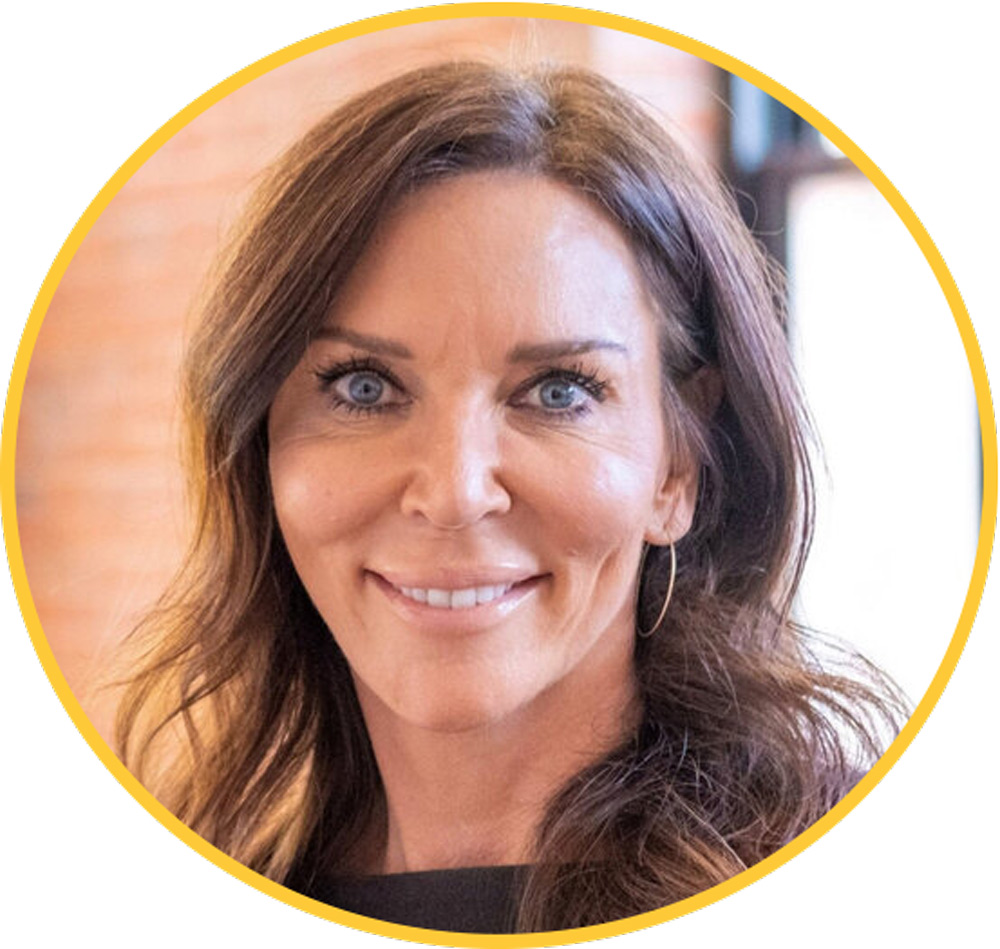
or much of her career, Natasha Ozybko (EMBA ’22) has been one of the only women in a meeting or team. “There were so few women in my industry and leadership positions that it was difficult to navigate the corporate ladder without losing my identity,” she says.
She recognized the lack of content for women in historically male-dominated infrastructure sectors. “My now-business partner and I decided we were going to change that,” she says. Together with co-founder Monica Dutcher, Ozybko created MOXY: The Voice of Women in Infrastructure for women who work in sectors from highways to alternative energy, and beyond.
Ozybko never planned on starting a business — especially while pursuing her Executive MBA. “My EMBA cohort and professors supported me in launching MOXY and have been with me every step of the way in creating it.”
MOXY curates multilingual articles (English, Spanish, and French) covering topics such as leadership development, mental health, entrepreneurship, work-life balance, immigration, and diversity.
“Our goal is to inform, empower, and inspire women in infrastructure,” Ozybko says. “We’ve been pleasantly surprised that half of our readers are men! I believe they are trying to understand our experiences, create more inclusive environments, and be better advocates.”
ALL THINGS WPC
Cloud computing goes to high school
o-developed by ASU’s University Technology Office (UTO), W. P. Carey, Amazon Web Services, and the National Education Equity Lab, CIS 194: Cloud Foundations is a free, 13-week course delivered in a hybrid modality to high school students nationwide. Students who participate can earn high school and college course credits and an industry certificate in cloud computing.
The online, asynchronous part of the course — including recorded lectures by ASU faculty, weekly assignments, and quizzes — is managed through Canvas. This allows students to log into the course from their high school’s classrooms and reduces barriers for those with unreliable access to the internet or computing devices.
W. P. Carey School faculty Raghu Santanam and Jason Nichols co-teach the course with UTO’s Deputy Chief Information Officer, John Rome.
“The next generation of jobs will require a working knowledge of cloud computing infrastructures,” says Santanam. “It is essential for students to be familiar with cloud technologies and their potential applications. Getting this foundational knowledge in high school gives a great opportunity for these students to develop an interest in technology careers.”
CIS 194 is a Universal Learning course offered through ASU’s Learning Enterprise. Visit learning.asu.edu to learn more.
All Things WPC
The evolution of the online MBA
Bringing together management and technology for over two decades
he W. P. Carey School’s Online MBA program dates back to 2000, when the school began offering courses to John Deere employees who sought high-quality management training but couldn’t interrupt their careers. The college had been looking for ways to use the internet to bring its programs to a broader population and, based on the positive response from corporate partners and their employees, a dedicated Online MBA program seemed the perfect opportunity to join the “e-learning” market.
One of the first at a top-ranked business school, the W. P. Carey Online MBA was born in 2004. Back then, faculty taught courses over the web via email and CD-ROMs. Yet it was never the type of program where students dropped in, got their assignments, and were on their own.
Then and now, participants come to ASU for an intense orientation, meet with faculty, and engage in team-building activities. They also meet with faculty at the end of each five-week course. Students receive an applied project that requires teamwork and problem-solving skills. Additionally, the Online MBA delivers the same course content as the Full-time and Evening MBA.
“We bring students into the ASU fold; they aren’t faceless strangers on the internet. They are fellow Sun Devils, and we make every effort to get to know students on a personal level,” says Kate Eaton, clinical associate professor of marketing and assistant dean of MBA programs.
All Things WPC
Stories of Sun Devil Giving
Volunteer & Give
Sun Devil Stories
very year, the ASU community supports causes university-wide on Sun Devil Giving Day. This annual day is a significant source of scholarship funding for students who might not otherwise attend college or have the ability to continue their education when confronted with financial setbacks.
In 2022, many W. P. Carey community members gave to the school’s Kay A. Faris Emergency Scholarship Fund, which has provided emergency scholarships directly to W. P. Carey undergraduate students with immediate financial needs since 2015.
“This scholarship is unique because recipients don’t have to repay it. It’s also available every semester, not just during the traditional application season,” says Kay A. Faris, the fund’s namesake, who retired from the W. P. Carey School in 2021 after nearly 40 years of service. “Of the students awarded this scholarship, the majority are still enrolled or have graduated.”
We can’t thank our donors enough for their support and generosity. Sun Devil Giving Day 2022 was a huge success, with more than 260 donors collectively raising more than $30,000 for W. P. Carey. These gifts will have a major impact.
All Things WPC
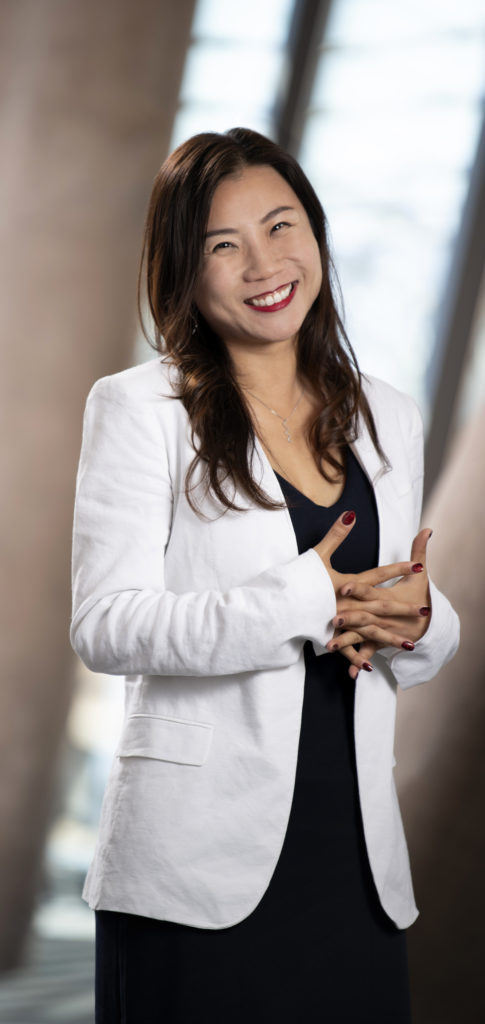
Sparking positive change, together
Sun Devil Stories
efore Lelle Wang (MBA ’23) relocated to Arizona, her whole life had been in China, where she had a stable career as a product manager and nearly a decade of experience in telecom. Moving to the U.S. inspired her to look into MBA programs.
Wang earned bachelor’s and master’s degrees in computer science in China and thought a stateside MBA would enhance her career opportunities. “I had the technical side of the knowledge but hadn’t studied business in a systematic way,” she says.
Having lived in a non-English-speaking culture and environment before coming to ASU, she describes the experience of earning a Full-time MBA in the U.S. as challenging, rewarding, and inspiring.
“When I couldn’t express myself freely, I was nervous about speaking in English or having an interview with an employer,” she says. One-on-one meetings with her career coach made a huge difference, as did the support of her peers.
Wang looks forward to continuing the school’s legacy after she graduates. “I try to realize the Carey Code,” she says. “We are people from W. P. Carey. We want to maintain this reputation.”
The Carey Code is a collective promise to the ideals of our school and the values we bring to all that we do.
Visit careycode.com to learn more.
All Things WPC
Leveraging business skills to build communities
Sun Devil Stories
n fall 2021, Shaandiin Parrish (MiM ’22) joined with fellow W. P. Carey School of Business students Hiram Bowen (BS Economics ’25) and Lakota Kinlicheenie (BA Business ’25) to relaunch the Native American Business Organization (NABO) at ASU after a four-year hiatus. W. P. Carey interviewed Parrish to learn more about the club and her journey to business school.
The focus of NABO, a student-driven club, is to help members excel academically, develop professional business skills, and promote cultural and social awareness to the ASU community and its affiliates.
“We also want to inspire more Native American students to consider applying and pursuing a business degree,” Parrish says.
“Although our demographic is small at W. P. Carey, the support is tremendous,” she says. “In five years, I hope that we grow the number of Native American business students because our communities need business knowledge.”
When the COVID-19 pandemic hit, Parrish stood alongside President of the Navajo Nation Jonathan Nez to distribute personal protective equipment, food, water, supplies, and other necessities. “The pandemic hit our population hard because 30% does not have running water, another 30% does not have electricity, and a greater portion does not have internet services,” she says. “Major infrastructure flaws caused many of our people to die. So I knew we needed a change.”
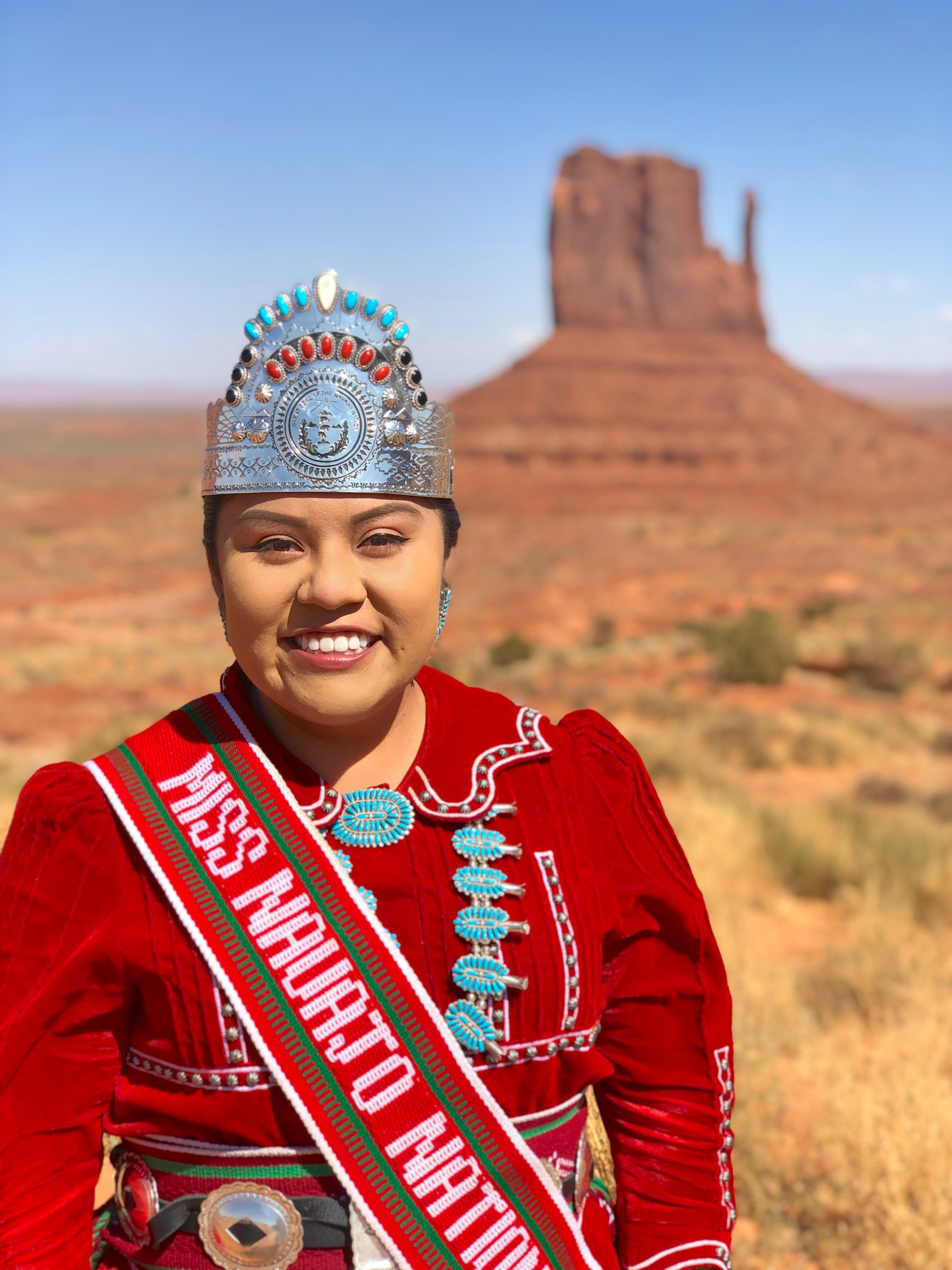
Parrish’s grandparents raised her to focus on the Navajo community. “My grandfather Paul Parrish, a Navajo code talker, used his G.I. Bill to go to business school,” she says. “In the 1970s, he used his education to open one of the first gas stations in the Navajo Nation.”
Her grandfather’s vision for their community inspired Parrish to dedicate her life to public service. “I decided to pursue a business degree because business school teaches you how to make quick, confident decisions, and that’s what our people need,” she says. “I chose W. P. Carey because it was one of the best business schools close to my reservation.
“I could learn four days a week at W. P. Carey and drive five hours north to be with my community and apply the skills I learned in my classes.”
W. P. Carey has equipped Parrish to talk to her communities about possibilities for their economy in the Navajo Nation. “I’ve been able to teach basic financial education and encourage young people to start businesses,” she says. “I know I will always call W. P. Carey my home because it allowed me to help my home in the Navajo Nation.”
ALL THINGS WPC
Creating a path forward
Julia LaRosa, clinical assistant professor in the Department of Management and Entrepreneurship, is one of the members of the W. P. Carey community who teaches in the program. LaRosa focuses on workplace readiness skills through business fundamentals, business communication, and professional development courses. “While the curriculum focuses on business skills, it’s also focused on building students’ self-efficacy, or their belief that they can implement the skills they learn,” she explains. “This disrupts some of the messages many of those women have heard up to this point in their lives.”
W. P. Carey Full-time MBA students also assist in the program, offering services including résumé review, interviewing practice, and financial literacy training. Volunteering in the program creates new connections while giving MBA students the chance to grow their leadership skills. Further, it answers the ASU Charter’s call to judge ourselves by “who we include and how they succeed” and to grow our embeddedness in the communities we serve.
So far, the PATHS program has seen tremendous success. Of the women who have graduated from the program, 100% have jobs, and none have returned to jail or prison. “It’s compelling to witness the effect this kind of program can have,” LaRosa says. “It’s one thing to know that education can change lives, but it’s another to witness the transformation.”
–Mary Montemorra, PATHS graduate
ALL THINGS WPC
Teaming up with Salesforce to close the digital skills gap
Learning Opportunities
“We’re excited to partner with ASU to expand their workforce development program. It will unlock new sources of talent by driving Salesforce skills that lead students to career pathways in the Salesforce ecosystem,” says Amy Regan Morehouse, senior vice president of the Trailhead Academy.
Salesforce’s Trailhead Academy will help ASU build and validate in-demand digital skills with expert-led learning programs, role-based credentials, and workforce development strategies designed to fuel net-new talent.
As a Salesforce Authorized Training Provider, ASU can:
- Leverage Trailhead Academy resources and the certified instructor community to empower faculty.
- Lean on Salesforce for tailored guidance and program management across workforce development initiatives.
- Deliver Salesforce training to students using up-to-date course materials, exercise guides, and experiential projects that simulate real organizational configurations provided by Trailhead Academy.
- Certify and validate students’ expertise using discounted exam vouchers.
While the Salesforce economy grows, so does the demand for digital skills. By 2025, employers’ need for digital skills will rise by more than 50%, which means employees will require adding to their existing skillset and learning news skills for an entirely different job to succeed in their future work.
Within W. P. Carey, the partnership with Salesforce will expand upon the existing AZNext program that addresses the need for more skilled workers in IT roles. “The partnership will greatly enable AZNext to increase talent diversity in the technology sector and address the acute shortage of trained workforce in the Salesforce ecosystem,” says Raghu Santanam, executive director of the Department of Labor-funded digital workforce initiative AZNext. Santanam is also a professor of information systems, McCord Chair in Business, and senior associate dean for Executive Education, Corporate Partnerships, and Lifelong Learning.
Visit wpcarey.asu.edu/aznext to learn more.
Bringing the future to the present: Anticipating VR applications and what’s next
Bringing the future to the present: Anticipating VR applications and what’s next
ver since he saw the movie of H.G. Wells’ The Time Machine when he was a kid, ASU grad Rami Kalla (BS Business Management/BA Spanish ’99) has been into time travel. He glimpsed the future himself one day in 2016 when he was building a new home. “They give you these tiny samples of your counters and your floors and your cabinets and they say, ‘Imagine what your house is going to look like.’ I thought, why should you have to imagine it? Why can’t I see how it would look?”
As founder of the Tempe, Arizona-based video production studio Point in Time, Kalla was aware of the potential of virtual reality (VR), and decided to apply it on behalf of the homebuilding industry so that customers like him could see what they were getting in advance. Unfortunately, the construction sector wasn’t ready for his future-minded idea. But when the COVID-19 pandemic hit and companies were looking for virtual solutions to virtually everything, his company was well-positioned to meet the demand.
“We’ve gotten to do some cool projects,” says Kalla.
Since its founding 20 years ago, the company has grown steadily, serving such national and international clients as Ford, McDonald’s, and PetSmart. Plus, Point in Time enabled ASU’s Thunderbird School of Global Management’s graduation to be conducted in virtual space.
Fun, food, and finance

e’s fluent in Hebrew and fond of gangster movies and books that make him emotional.
He’s a finance professor by trade and recently started his new post at Arizona State University as dean of the W. P. Carey School of Business.
Meet Ohad Kadan.
After an intense national search, Kadan left his position as the vice dean for Education and Globalization and the H. Frederick Hagemann Jr. Professor of Finance at the Olin Business School at Washington University in St. Louis to report for work at the Tempe campus in Arizona on July 1.
Since then, he’s hit the ground running. Kadan has been holding planning sessions with faculty and key personnel, finding new ways for innovation, setting long and short-term goals, and adjusting from a private school setting to a public university.
We spoke to Kadan a few weeks into his new tenure. Here’s what he had to say about his new and unfolding adventure.
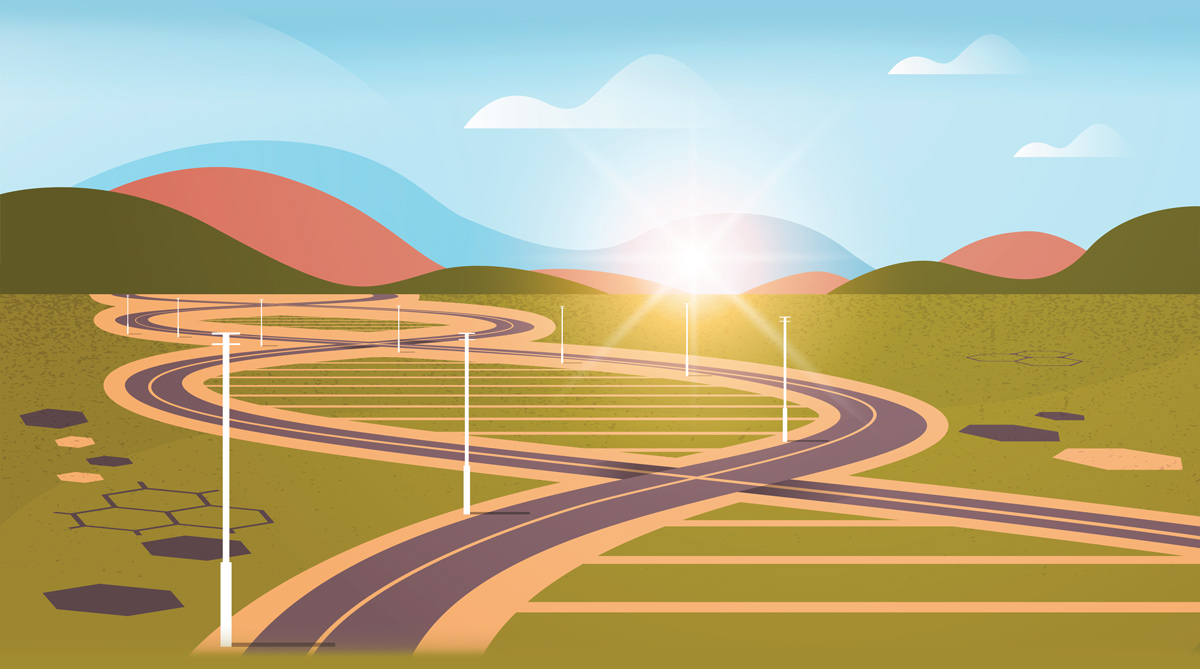
Career support for alumni
- The signature event series for W. P. Carey students and alumni, Career 4 Workshops are hosted by the W. P. Carey Career Services Center.
- Attend all of the Career 4 sessions or pick and choose from the options: Career Blueprint, Personal Brand, Narrative, and Networking.
- Each Career 4 Workshop is virtual and offered three to four times a year on a rolling basis, making it easy to access and allowing students and alumni to choose what they need.
- Visit our alumni calendar to register for future Career 4 events: wpcarey.asu.edu/alumni-events.

Propelling business forward
t W. P. Carey, we’ve embarked on an ambitious strategic planning process that will build on the business school’s existing foundation and shape its future.
The results we want?
To strengthen W. P. Carey’s global leadership position in business research, education, and engagement within five years.
Led by Dean Ohad Kadan, the schoolwide process examines critical areas of growth and opportunity with guidance from school leadership and key constituencies, including alumni, faculty, staff, students, donors, and corporate and community partners.
As part of the process, leaders in W. P. Carey’s business units are addressing needs and developing priorities that align with the school’s vision and mission. This work will help define a standard of success for the school’s objectives and provide a blueprint for the resources and collaboration needed to achieve the goals.
Discover more about W. P. Carey’s 10 core tenets, what these beliefs and convictions look like in practice, and how they will illustrate the school’s future obligations and aspirations.

Propelling business forward
t W. P. Carey, we’ve embarked on an ambitious strategic planning process that will build on the business school’s existing foundation and shape its future.
The results we want?
To strengthen W. P. Carey’s global leadership position in business research, education, and engagement within five years.
Led by Dean Ohad Kadan, the schoolwide process examines critical areas of growth and opportunity with guidance from school leadership and key constituencies, including alumni, faculty, staff, students, donors, and corporate and community partners.
As part of the process, leaders in W. P. Carey’s business units are addressing needs and developing priorities that align with the school’s vision and mission. This work will help define a standard of success for the school’s objectives and provide a blueprint for the resources and collaboration needed to achieve the goals.
Discover more about W. P. Carey’s 10 core tenets, what these beliefs and convictions look like in practice, and how they will illustrate the school’s future obligations and aspirations.

Private investor meetings before IPOs contribute to longer-term vision
f your company were going public, how might it encourage investors to be less reactive to bad news or bumps along the way — to keep a longer-term perspective and stay onboard?
According to research by W. P. Carey Assistant Professor of Accountancy Badryah Alhusaini, and colleagues from Washington University and Notre Dame, it’s not impossible.
They analyzed R&D-intensive firms that took advantage of the Jumpstart Our Business Startups (JOBS) Act of 2012 to examine the impact of private communications on institutional myopia.
Under the JOBS Act, emerging growth companies may talk privately with investors for months before an initial public offering (IPO). These early discussions are a considerable departure from previous regulations in which the only direct dialogue between managers and investors occurred during the “road show,” a short meeting broadcast to the public at least once, during which only information limited to the formal IPO documents is shared.

Secondary markets should be important choice for excess inventory disposal
f you’ve ever gotten a great deal at a dollar store, won an online auction, or spent the day bargain hunting at stores such as Ross and T.J. Maxx, you’ve participated in secondary markets, a $664 billion business in the U.S. during 2020. That’s more than double its 2008 U.S. market size — and it’s one reason Dale Rogers, supply chain management professor and ON Semiconductor Professor of Business, thinks product-selling firms should consider making secondary markets part of their sales strategy.
He should know: Rogers is one of the first scholars to track such markets and published a multiyear study of them in the U.S. and China. Based on this and other research, he says secondary markets boost profit, are growing worldwide, and are more critical than ever.
Value-added
Secondary markets are sales channels that allow companies to dispose of excess inventory cost-effectively and often profitably. That inventory may be obsolete, unfashionable, slow-moving, or even defective, but chances are there’s a buyer for it. Along with auction sites, factory outlets, and dollar stores, salvage dealers and others trade off-price merchandise.

Inside job: Understanding internal labor markets
e’re going through a period of unprecedented changes in the employment market, which makes it an excellent time to take a closer look. We usually think of job markets as being a space between companies, where potential employees and employers go to connect. But there’s another kind of labor market — the internal labor market (ILM), which exists within a given company.
“Economists don’t have many models for ILMs,” says Andreas Kostøl, assistant professor of economics. “There is no clear sense of what they look like and how they work.”
That’s why Kostøl and an international team of economists developed a model that sheds new light on ILMs.
Data in demand
The first thing the researchers needed was data, which they found in Norway, where the law requires companies to report all employee status changes. Kostøl is Norwegian, and his team represents scholars from Vienna, Oslo, Berlin, and Tempe, Arizona.
Class Notes

PC Sportscards tops Sun Devil 100’s Class of 2022
osh Cohen earned an undergraduate degree in business administration in 2005. After graduation, he worked in tech and as a basketball coach.
Although Cohen had collected sports cards as a kid, he hadn’t dipped his toe in it in years. Then, in 2013, a friend got him back into collecting. After he couldn’t sell a valuable card for a reasonable price, Cohen took it to a card show and sold it for top dollar.
In March 2014, Cohen left tech and went into business for himself. Two years later, at the National Sports Card Convention in Atlantic City, New Jersey, he shared a space with sports card dealer Zach Polen. They decided it was better to work together and quickly became a contender in the world of modern card dealers.
In 2020, PC Sportscards grew its business more than 390% and is the 2022 fastest-growing Sun Devil-led company.
WPC Class Notes
Celebrating the Golden Grads from the class of 1972
raduates from W. P. Carey’s class of 1972 returned to the Tempe campus in May for their Golden Reunion. The W. P. Carey Alumni Relations team hosts this special event every year, allowing classmates from the university’s 50-year reunion class and their guests to reconnect with each other and ASU.
Class of 1972 reunion attendees were joined at the breakfast and short program by members of the classes of 1957, 1962, 1963, 1964, 1968, and 1969. Here’s what they shared:
1960s
Ed Sandidge (BS Insurance ’62) celebrated his 61st year at MassMutual Arizona in April. He was honored in October 2017 for his contributions to Sun Devil Athletics, the ASU President’s Club, and the W. P. Carey Alumni Council.
Alvin Bender (BS Accountancy ’63) is a certified public accountant in Phoenix who helps individuals and small business owners prepare their taxes.
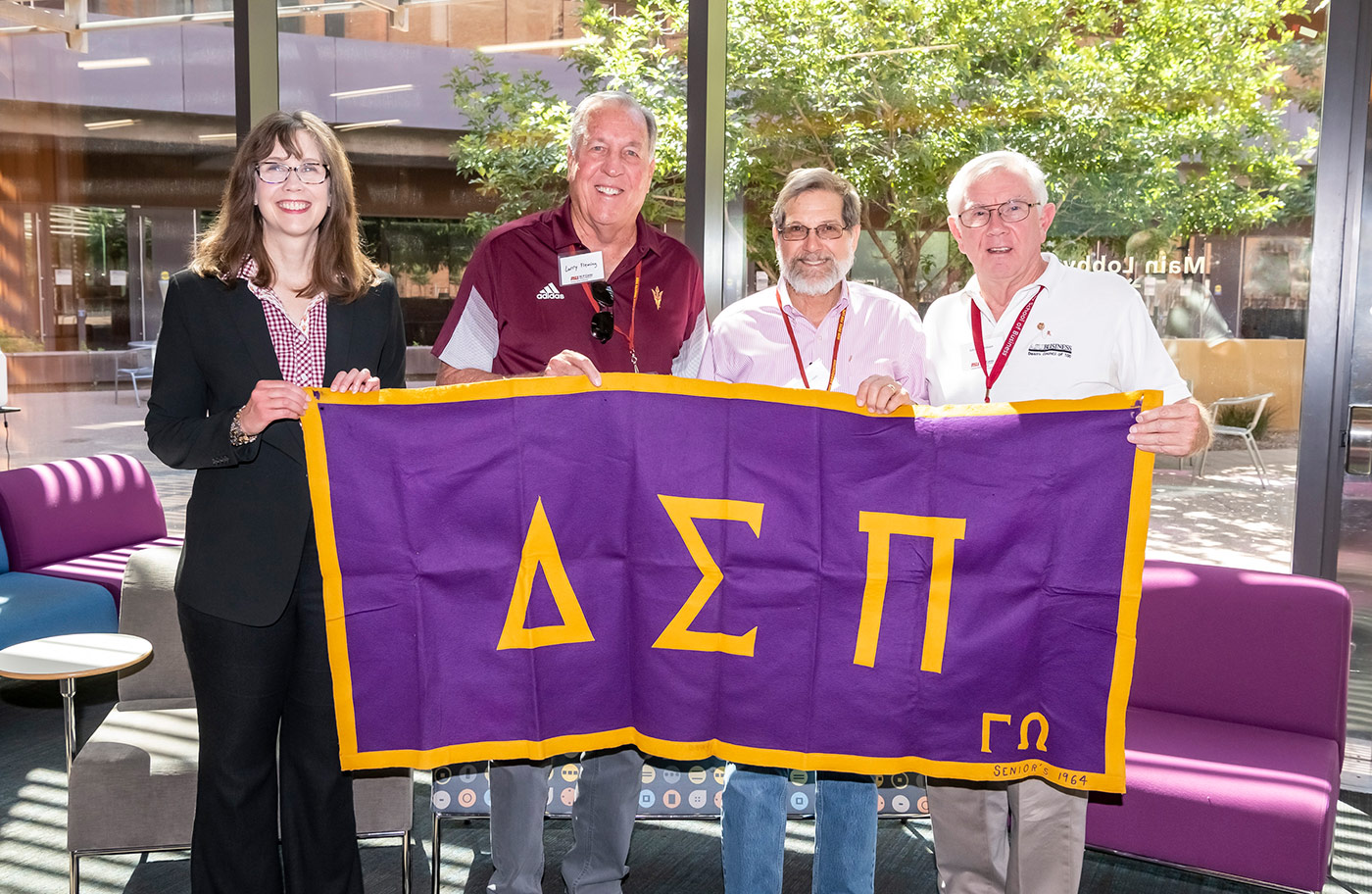
From left: Vice Dean Amy Ostrom and members of the Delta Sigma Pi business fraternity Larry Fleming (BS Business Administration ’72), Irwin Sheinbein (BS Business Administration ’72), and John Richardson (BS Business Administration ’72) hold the 1964 Delta Sigma Pi banner.
Juliann Trump (BS Business Administration ’69) is a Scottsdale Unified School District teacher. She also serves as a DECA advisor, sharing access to resources to enhance the classroom experience, bringing learning to life, and motivating students.
1970s
Charles Easaw’s (BS Management ’72) first job after graduating was as an employment supervisor at Mountain Bell telephone company in Phoenix.
Larry Fleming (BS Business Administration ’72) is the founder and general building contractor of the homebuilding company Millenium Constructors in Phoenix. Fleming was a member of the Delta Sigma Pi business fraternity.
Gordon Holiday (BS Agricultural Economics ’72) retired from the U.S. Department of Agriculture in December 2011 after working at the agency for more than 30 years.
Celebrating the Golden Grads from the class of 1972

From left: Vice Dean Amy Ostrom and members of the Delta Sigma Pi business fraternity Larry Fleming (BS Business Administration ’72), Irwin Sheinbein (BS Business Administration ’72), and John Richardson (BS Business Administration ’72) hold the 1964 Delta Sigma Pi banner.
raduates from W. P. Carey’s class of 1972 returned to the Tempe campus in May for their Golden Reunion. The W. P. Carey Alumni Relations team hosts this special event every year, allowing classmates from the university’s 50-year reunion class and their guests to reconnect with each other and ASU.
Class of 1972 reunion attendees were joined at the breakfast and short program by members of the classes of 1957, 1962, 1963, 1964, 1968, and 1969. Here’s what they shared:
1960s
Ed Sandidge (BS Insurance ’62) celebrated his 61st year at MassMutual Arizona in April. He was honored in October 2017 for his contributions to Sun Devil Athletics, the ASU President’s Club, and the W. P. Carey Alumni Council.
Alvin Bender (BS Accountancy ’63) is a certified public accountant in Phoenix who helps individuals and small business owners prepare their taxes.
Jane McKallor (BS Accountancy ’64, MA Education ’70) supervised student teachers for the Arizona Department of Education for 15 years.
Harry Jones (BS Business Administration ’65, MBA ’70, PhD Business Administration ’72) said he’s tried to maintain himself as a generalist in business. As a manager and consultant to water improvement districts over his career, he’s engaged attorneys and hired accountants, operators, and more.
Gary Johnson (BS Economics ’68, MBA ’69) got the No. 1 job placement offer in 1968 from Ford Motor Co. at $750 a month. Today, Johnson is marketing director at the law offices of Glynn Gilcrease in Tempe, Ariz.
Nicholas Zozula (BS Accountancy ’68) retired from an accounting role in 2010 from D-Velco Manufacturing of Arizona (Northstar Aerospace). Since then, he has volunteered his time at his church as treasurer.
Juliann Trump (BS Business Administration ’69) is a Scottsdale Unified School District teacher. She also serves as a DECA advisor, sharing access to resources to enhance the classroom experience, bringing learning to life, and motivating students.
1970s
Charles Easaw’s (BS Management ’72) first job after graduating was as an employment supervisor at Mountain Bell telephone company in Phoenix.
Larry Fleming (BS Business Administration ’72) is the founder and general building contractor of the homebuilding company Millenium Constructors in Phoenix. Fleming was a member of the Delta Sigma Pi business fraternity.
Gordon Holiday (BS Agricultural Economics ’72) retired from the U.S. Department of Agriculture in December 2011 after working at the agency for more than 30 years.
In Memoriam
1961
Carmelita C. Cordova
BS Management
1975
Alfred M. Erickson
BS Accountancy
1980
Thomas J. Brooks
BS Finance
David B. Lorsch
BS Business Administration
1984
Max E. Jerrell
PhD Economics
John B. Kincaid
BS Finance
1985
David L. Andrews
BS Real Estate
Roy M. Emery Jr.
BS Accountancy
1986
Rosa Mroz
BS Accountancy
1987
Michael J. DeConcini
MBA
Timothy F. Lydon
BS Computer Information Systems
1988
Paul C. Rowberry
BS Finance
1990
DIrk J. Kitchel
BS Marketing
1991
Capt. Martin E. Decker (Ret.)
MBA
1993
Maxine A. Burns
BS Accountancy
1997
Stewart W. Moore
BS Computer Information Systems
2008
Ross N. Farnsworth III
BS Finance
2012
Daniel G. Westbrook
MBA
2018
Cory D. Light
BA Business (Global Leadership)
2022
Tyler M. Thompson
MBA
1961
Carmelita C. Cordova
BS Management
1975
Alfred M. Erickson
BS Accountancy
1980
Thomas J. Brooks
BS Finance
David B. Lorsch
BS Business Administration
1984
Max E. Jerrell
PhD Economics
John B. Kincaid
BS Finance
1985
David L. Andrews
BS Real Estate
Roy M. Emery Jr.
BS Accountancy
1986
Rosa Mroz
BS Accountancy
1987
Michael J. DeConcini
MBA
Timothy F. Lydon
BS Computer Information Systems
1988
Paul C. Rowberry
BS Finance
1990
DIrk J. Kitchel
BS Marketing
1991
Capt. Martin E. Decker (Ret.)
MBA
1993
Maxine A. Burns
BS Accountancy
1997
Stewart W. Moore
BS Computer Information Systems
2008
Ross N. Farnsworth III
BS Finance
2012
Daniel G. Westbrook
MBA
2018
Cory D. Light
BA Business (Global Leadership)
2022
Tyler M. Thompson
MBA
Remembering Lonnie Ostrom for his service to students, colleagues, donors
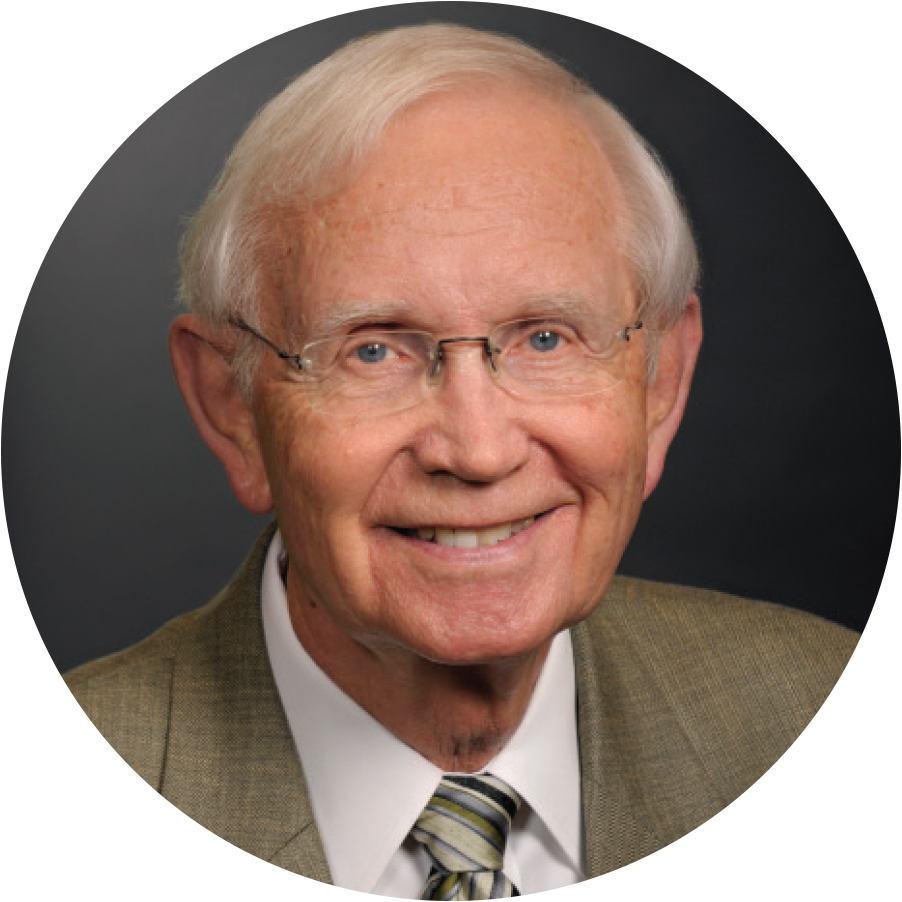
hen asked about lessons learned throughout his life, Lonnie Ostrom’s most important takeaway was: “Friendships and relationships dominate the memories you carry with you. That’s what life is all about.”
Ostrom adhered to this principle closely, through his unwavering commitment to developing meaningful relationships with each student, benefactor, and colleague with whom he worked.
An Air Force veteran who died July 4, Ostrom spent just shy of 50 years developing these relationships and advancing the future of ASU for generations to come. He was 80.
A professor of marketing and former associate dean at W. P. Carey, Ostrom inherited a nascent fundraising operation when he assumed the helm of the ASU Foundation in 1982. By the time he retired as president in 2005, he had transformed Arizona State University’s ability to raise support for its students, faculty, and programs.
Ostrom’s leadership and vision — demonstrated in new programs such as the President’s Club, Sun Devil Family Association, and Women & Philanthropy — changed the culture of philanthropy at ASU by breaking all previous expectations of what could be accomplished through fundraising.
Ostrom was audacious in his out-of-the-box thinking, leading the first two universitywide comprehensive campaigns at ASU — the Campaign for ASU and the ASU Campaign for Leadership. In both, he and the dynamic board he recruited led the foundation and university community in setting ambitious goals and then exceeding their ambitions.
Through these forward-thinking campaigns, Ostrom led the university in focusing on its priorities and deciding exactly what kind of university it wanted to be. His leadership, which Ostrom attributed to “a commitment to making work fun,” enabled ASU to take its place among the nation’s major institutions of higher learning worthy of private support.
“Lonnie’s tenure at the ASU Foundation was truly a defining moment for ASU,” says Foundation CEO Gretchen Buhlig. “We are grateful for his dedication to the success of our university and our students. He left a legacy that will be treasured.”
Ostrom is survived by his wife, Martha; children Amy Ostrom (vice dean and former interim dean for the W. P. Carey School, interim chair of marketing, President’s Professor, and PetSmart Chair in Service Leadership), Ryan Ostrom, and Jennifer Ostrom; stepchildren Amy O’Melia-Endres (former associate vice president of planned giving and development office at the ASU Foundation), Erin Tawney, Kathleen O’Melia, and Kelly Delmore; and 13 grandchildren.
Remembering Lonnie Ostrom for his service to students, colleagues, donors

hen asked about lessons learned throughout his life, Lonnie Ostrom’s most important takeaway was: “Friendships and relationships dominate the memories you carry with you. That’s what life is all about.”
Ostrom adhered to this principle closely, through his unwavering commitment to developing meaningful relationships with each student, benefactor, and colleague with whom he worked.
An Air Force veteran who died July 4, Ostrom spent just shy of 50 years developing these relationships and advancing the future of ASU for generations to come. He was 80.
A professor of marketing and former associate dean at W. P. Carey, Ostrom inherited a nascent fundraising operation when he assumed the helm of the ASU Foundation in 1982. By the time he retired as president in 2005, he had transformed Arizona State University’s ability to raise support for its students, faculty, and programs.
Ostrom’s leadership and vision — demonstrated in new programs such as the President’s Club, Sun Devil Family Association, and Women & Philanthropy — changed the culture of philanthropy at ASU by breaking all previous expectations of what could be accomplished through fundraising.
Ostrom was audacious in his out-of-the-box thinking, leading the first two universitywide comprehensive campaigns at ASU — the Campaign for ASU and the ASU Campaign for Leadership. In both, he and the dynamic board he recruited led the foundation and university community in setting ambitious goals and then exceeding their ambitions.
Through these forward-thinking campaigns, Ostrom led the university in focusing on its priorities and deciding exactly what kind of university it wanted to be. His leadership, which Ostrom attributed to “a commitment to making work fun,” enabled ASU to take its place among the nation’s major institutions of higher learning worthy of private support.
“Lonnie’s tenure at the ASU Foundation was truly a defining moment for ASU,” says Foundation CEO Gretchen Buhlig. “We are grateful for his dedication to the success of our university and our students. He left a legacy that will be treasured.”
Ostrom is survived by his wife, Martha; children Amy Ostrom (vice dean and former interim dean for the W. P. Carey School, interim chair of marketing, President’s Professor, and PetSmart Chair in Service Leadership), Ryan Ostrom, and Jennifer Ostrom; stepchildren Amy O’Melia-Endres (former associate vice president of planned giving and development office at the ASU Foundation), Erin Tawney, Kathleen O’Melia, and Kelly Delmore; and 13 grandchildren.
Remembering a force in the macroeconomics field, Berthold Herrendorf
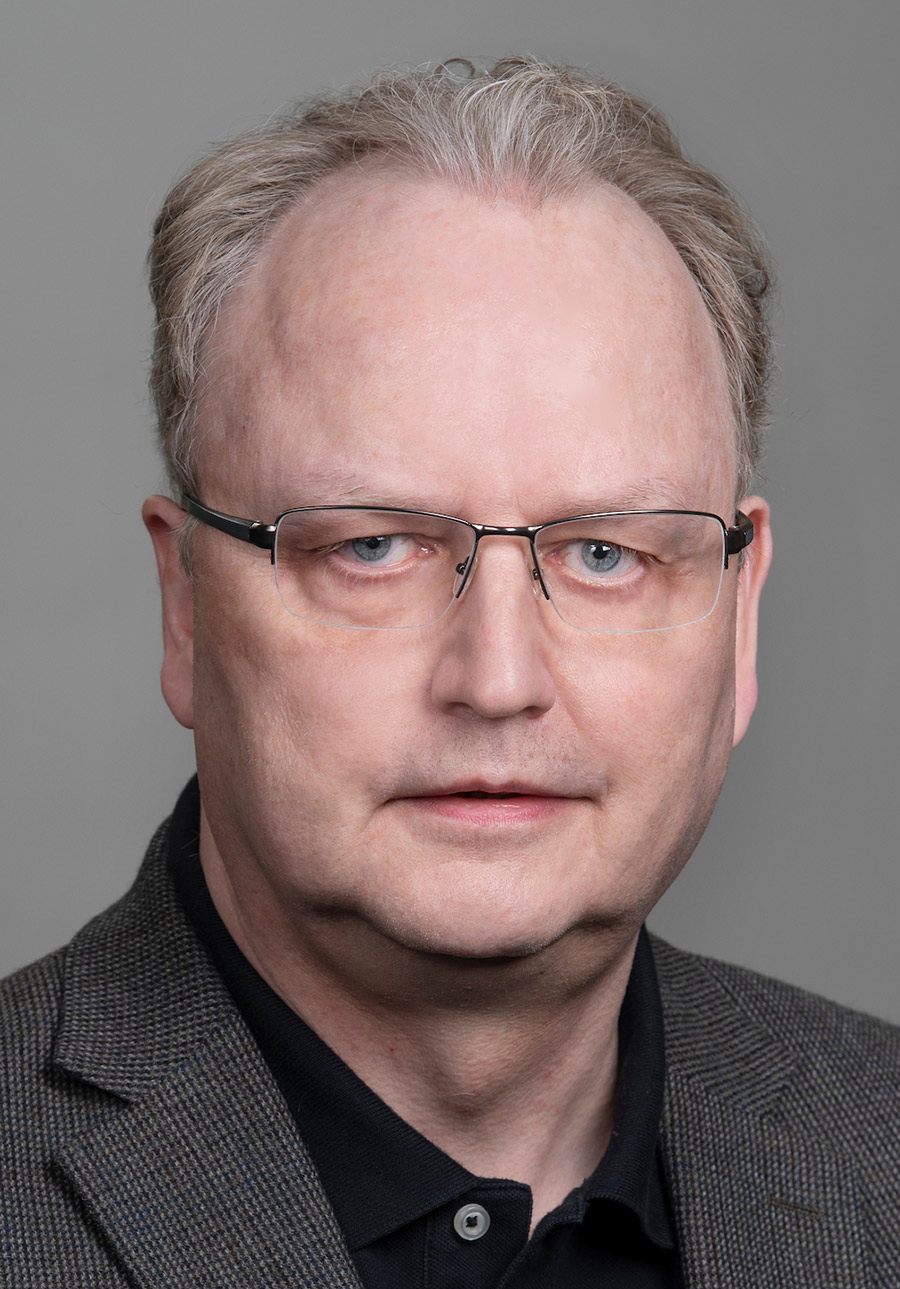
rofessor of Economics Berthold Herrendorf, who had been with W. P. Carey since 2003, died in July. He was 58.
Herrendorf was a force in the macroeconomics field. His research consistently blended economic theory with careful measurement and data. He made multiple contributions to the understanding of the drivers of income and productivity differences across countries, ranging from the impact of barriers to entry and trade on total factor productivity, to the examination of which sectors make developing countries unproductive. Most recently, his research considered economic growth and development, particularly in structural transformation. His chapter on structural transformation in The Handbook of Economic Growth is a standard reference for work in that area.
Herrendorf additionally served the field through editorships at Research in Economics and the Economic Journal. He also taught several undergraduate and graduate courses in macroeconomics and development economics. In 2019, he won a W. P. Carey Outstanding Graduate Teaching Award.
“Our department lost an outstanding scholar and a friend,” says Alejandro Manelli, chair of the Department of Economics. “Berthold was always willing to talk through a research problem or take time to mentor early career scholars. One could tell whether Berthold was in the room; he was never quiet! He always had an opinion, and he shared it freely. We will miss him.”
Before joining W. P. Carey, Herrendorf was an associate professor at the Universidad Carlos III de Madrid in Spain and an assistant professor at the University of Warwick in the United Kingdom. He earned his PhD at the European University Institute in Italy in 1996. Herrendorf grew up in Germany and was a dual citizen of the United States and his birth country.
Remembering a force in the macroeconomics field, Berthold Herrendorf

rofessor of Economics Berthold Herrendorf, who had been with W. P. Carey since 2003, died in July. He was 58.
Herrendorf was a force in the macroeconomics field. His research consistently blended economic theory with careful measurement and data. He made multiple contributions to the understanding of the drivers of income and productivity differences across countries, ranging from the impact of barriers to entry and trade on total factor productivity, to the examination of which sectors make developing countries unproductive. Most recently, his research considered economic growth and development, particularly in structural transformation. His chapter on structural transformation in The Handbook of Economic Growth is a standard reference for work in that area.
Herrendorf additionally served the field through editorships at Research in Economics and the Economic Journal. He also taught several undergraduate and graduate courses in macroeconomics and development economics. In 2019, he won a W. P. Carey Outstanding Graduate Teaching Award.
“Our department lost an outstanding scholar and a friend,” says Alejandro Manelli, chair of the Department of Economics. “Berthold was always willing to talk through a research problem or take time to mentor early career scholars. One could tell whether Berthold was in the room; he was never quiet! He always had an opinion, and he shared it freely. We will miss him.”
Before joining W. P. Carey, Herrendorf was an associate professor at the Universidad Carlos III de Madrid in Spain and an assistant professor at the University of Warwick in the United Kingdom. He earned his PhD at the European University Institute in Italy in 1996. Herrendorf grew up in Germany and was a dual citizen of the United States and his birth country.
Remembering Triple Devil and Professor John Konopka
ohn M. Konopka (BS Quantitative Business Analysis ’78, MS Engineering ’80, PhD Business Administration ’96), clinical assistant professor of supply chain management, died from leukemia March 25. He was 66. In 2017, Konopka joined ASU after a successful 35-year career as a supply chain analyst at IBM. He taught several courses at the undergraduate and graduate degree levels. Konopka also became the executive director of the Supply Chain Executive Consortium, which brings together industry leaders and ASU supply chain management faculty to address current supply chain concerns and prepare for future issues. He also left the W. P. Carey School with more than a top-rated education — he found his life partner, Dena Chavez (BS Accountancy ’88), with whom he had two daughters, Stefanie and Sophia.
JUST FOR FUN WPC
Then …
and now…


BAC
Building
The BAC building opened in March 1984 to alleviate overcrowding. Today it is one of three business school buildings on ASU’s Tempe campus, including the BA building (dedicated in 1968) and McCord Hall (dedicated in June 2013).


College of Business Administration students work in the computing lab. The college’s C-wing addition was the first on the ASU campus to include television studio classrooms for distance learning and one of the first to designate space for computer labs.
Computer
Lab

BAC
Building
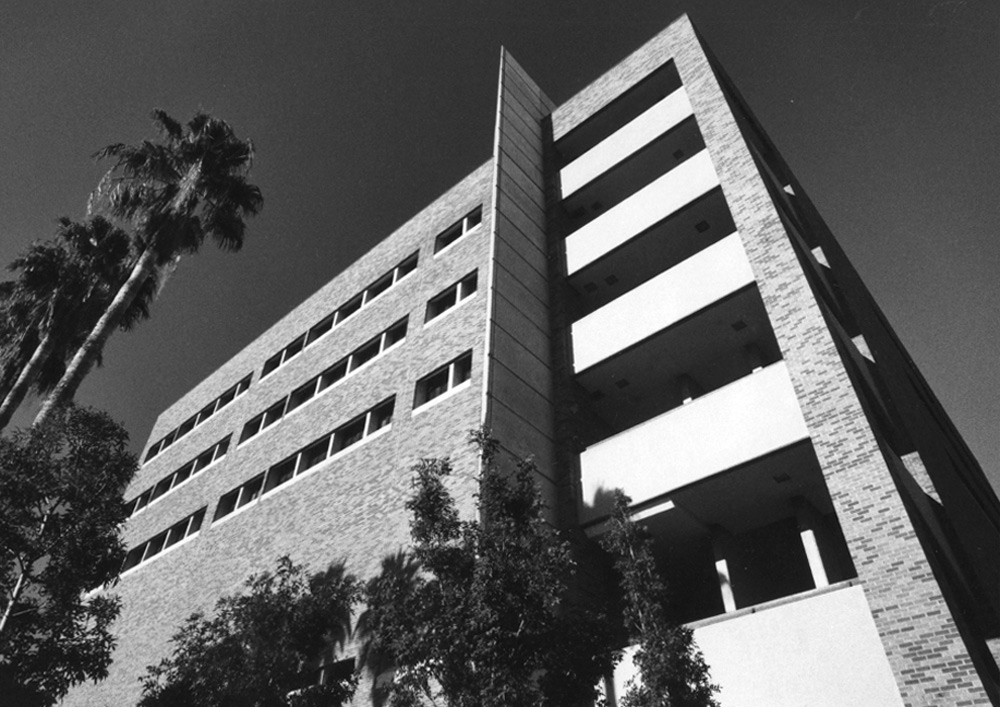
The BAC building opened in March 1984 to alleviate overcrowding. Today it is one of three business school buildings on ASU’s Tempe campus, including the BA building (dedicated in 1968) and McCord Hall (dedicated in June 2013).
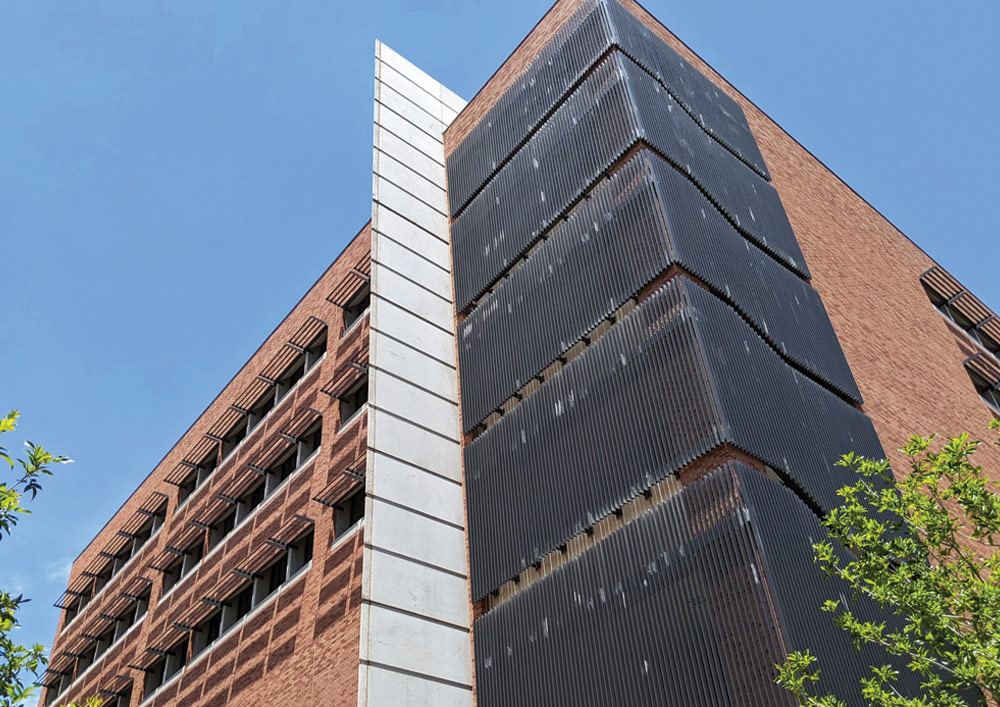
Computer
Lab
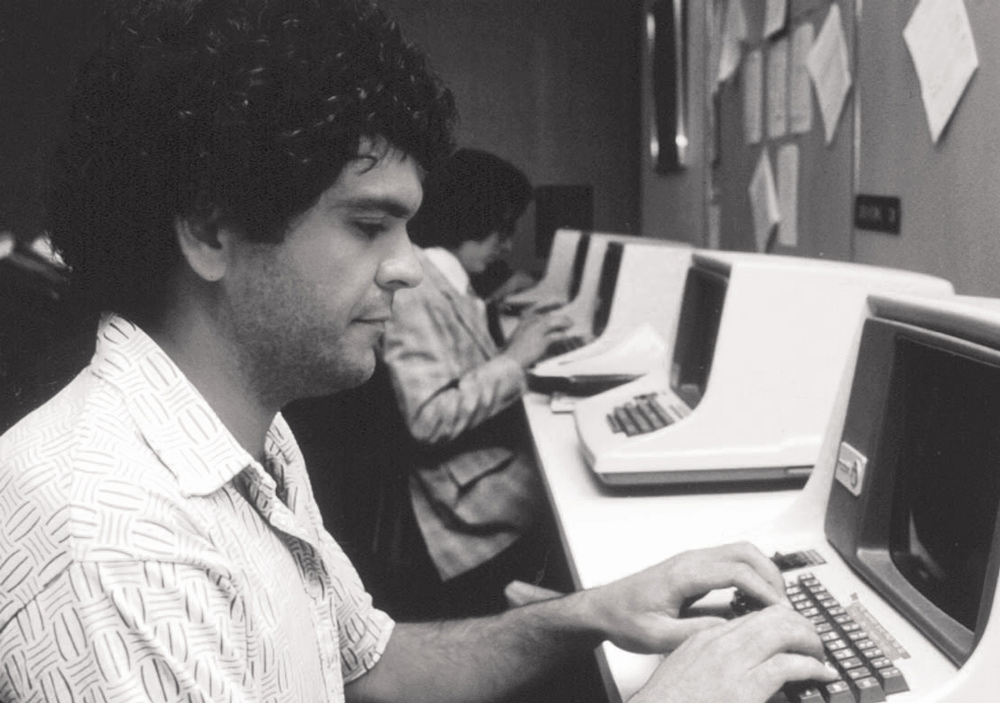
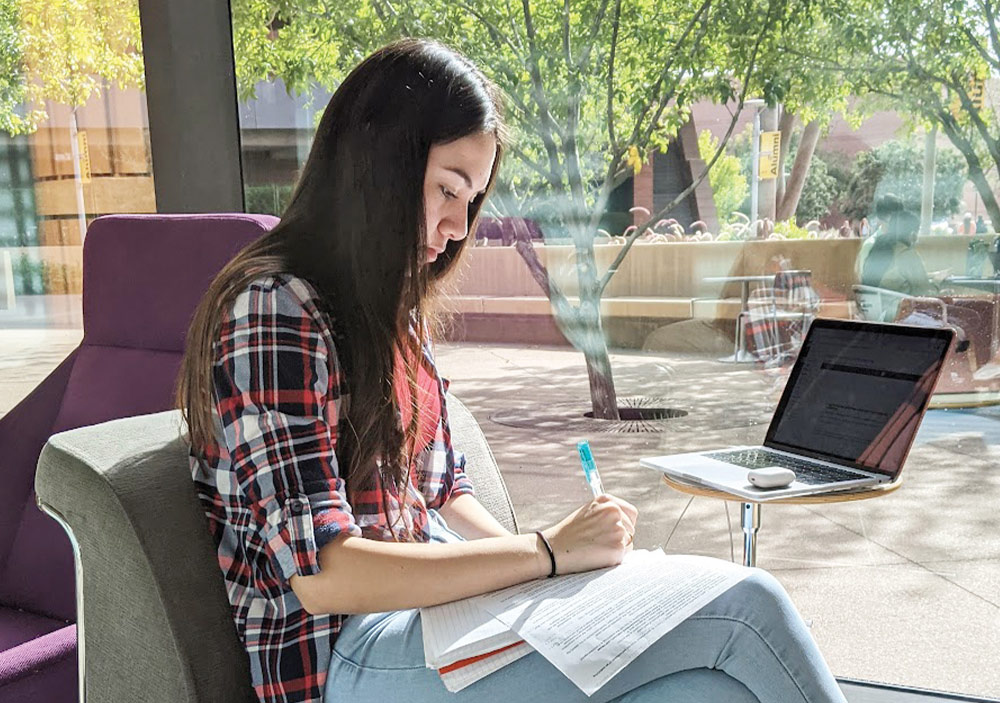
Share your ‘then … and now’ photos
The autumn 2023 issue of the W. P. Carey magazine will mark the 20th edition. Plus, we’ll be commemorating the school’s 20th anniversary of its renaming after the late Wm. Polk Carey, a visionary real estate investor and generous philanthropist and ASU benefactor. In 2003, Mr. Carey announced a $50 million gift from his educational and philanthropic foundation to the business school at ASU. The gift has been instrumental in helping W. P. Carey become one of the world’s top business schools. Mr. Carey passed away in January 2012 at the age of 81.
We would love for alumni to join the celebration. If you are a W. P. Carey graduate and have a favorite photo from when you attended, you can re-create it in the present and submit them both to possibly be showcased in the printed fall 2023 W. P. Carey magazine. We will share all submissions in the digital version of the autumn 2023 issue.
Submit your “then … and now” photos here: wpcarey.asu.edu/classnotes
Stay connected.
